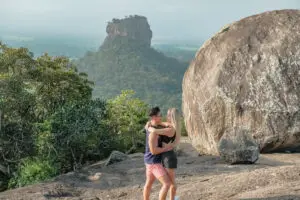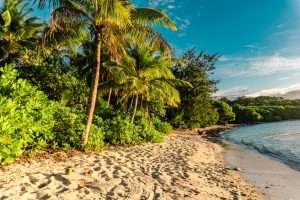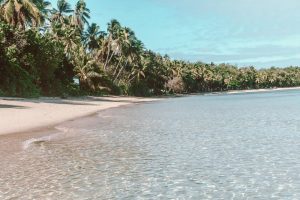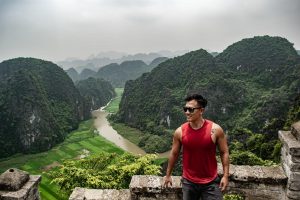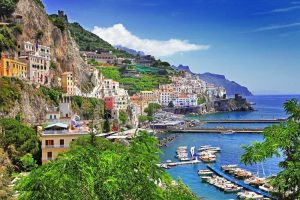Tuscany, the land of wine lovers is an ideal Italian road trip adventure. After traveling through much of the country including road trips through Sicily, Puglia, the Dolomites in the north, the Amalfi Coast, Lake Como, and more, it was time to focus on the ultimate wine region in Tuscany.
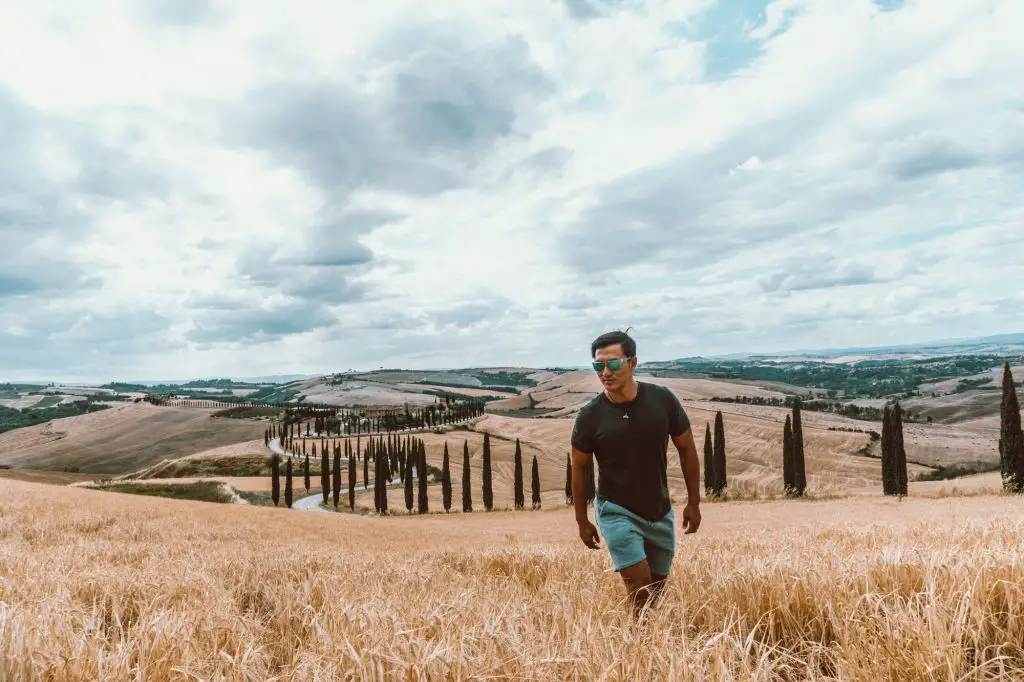
Tuscany is probably one of Italy’s most well known areas and has been endlessly referenced in pop culture by movies like Under The Tuscan Sun. It’s not hard to see why. The picturesque rolling hills, beautiful vineyards, and impossibly cute hillside towns make this a bucket list adventure for many travelers.
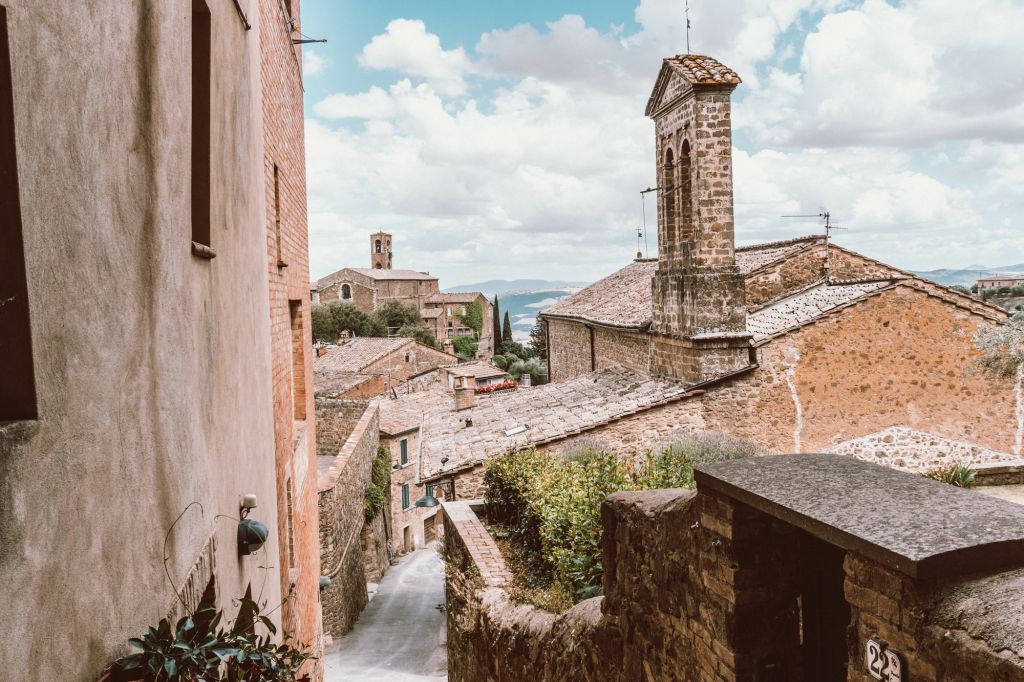
I spent a week driving through Tuscany drinking my way from north to south. I visited a seemingly endless list of beautiful villages, ate delicious Tuscan cuisine, and watched countless sunsets. This is how I structured my trip and the places I visited. If you’re also planning a trip through Tuscany and are overwhelmed with which villages to visit/stay, and which wineries to drink at, hopefully this guide will help you out!
Where I went in Tuscany
I had one week to spend in the Tuscany province of Italy. I think one week is actually a decent amount of time to explore Tuscany. This includes a stay in Florence, its capital city as well as many nights through its iconic wine regions.
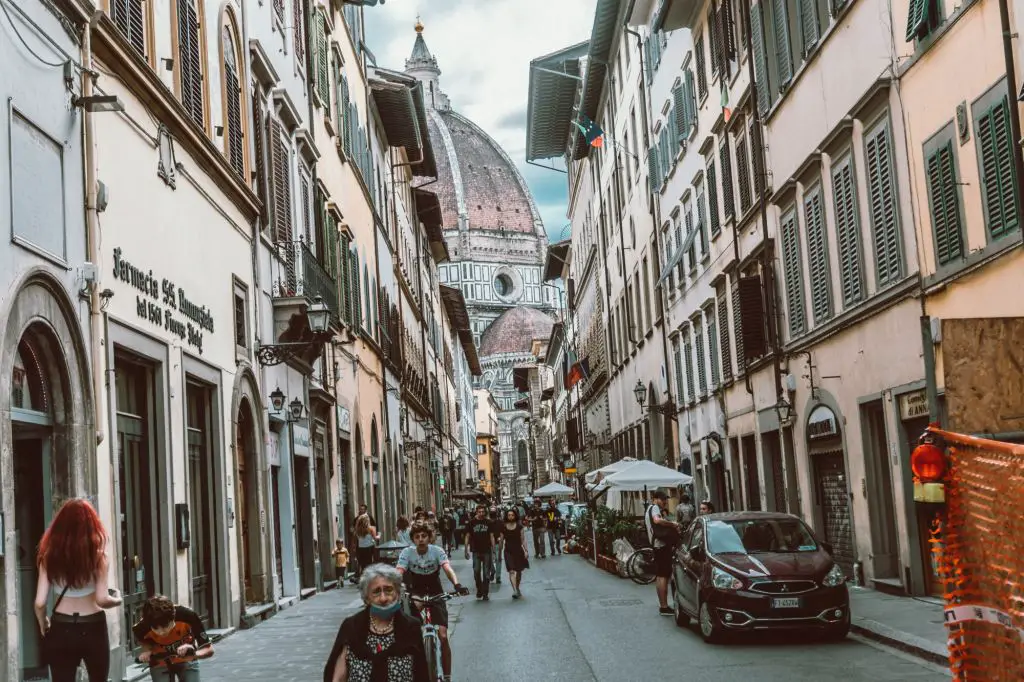
There is not much distance to travel on this trip especially if you start and end your trip in Florence. The wine region is all within a two hour drive from Florence. However, if you plan on visiting many of the smaller towns and wineries, you will spend a lot of time driving just because of the small roads.
When did I visit Tuscany?
I visited Tuscany in the summer season. Summer (July and August) is the high season for a reason as you can expect warm weather throughout the day and lush vines at the wineries. It’s definitely a picturesque time to visit the Tuscany region. However, I visited in 2021 during COVID so the tourism was not even close to what it would be like in normal times.
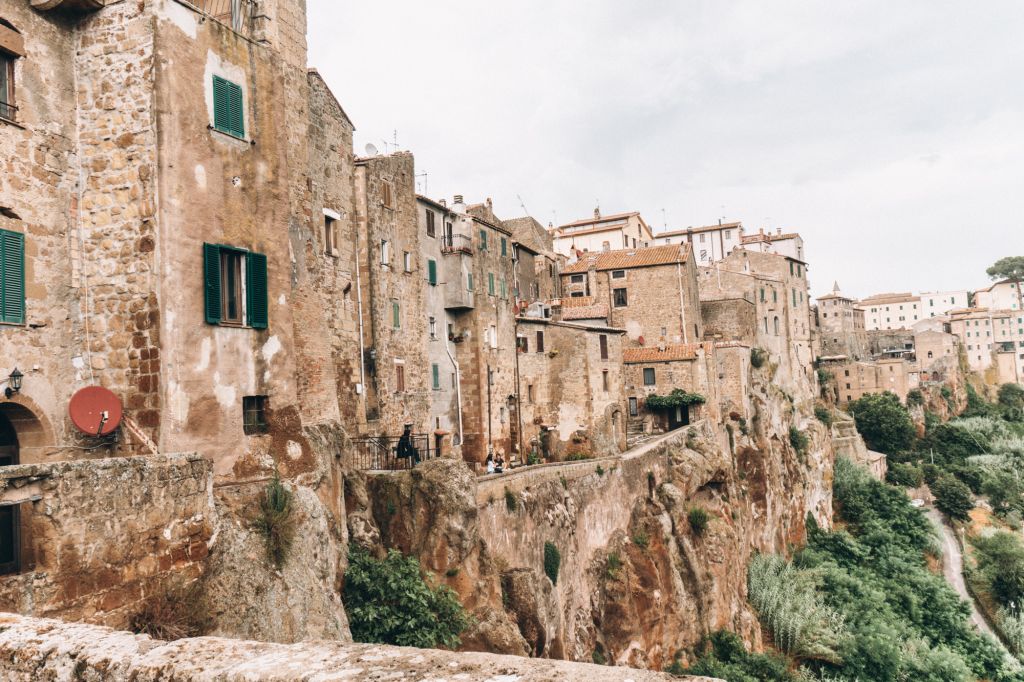
Having spoken to many Italians working in the region, normal summers pre-COVID are absolute insanity. Entourages of huge tour buses drop off tourists by the hundreds in small towns like Montalcino and San Gimignano. Restaurants and wineries are fully booked weeks in advance so you don’t stand a chance being spontaneous.
If I come back to the region, I would probably visit in the early fall right before they harvest. You still get the same beautiful views of the Tuscan landscape with a fraction of the crowds.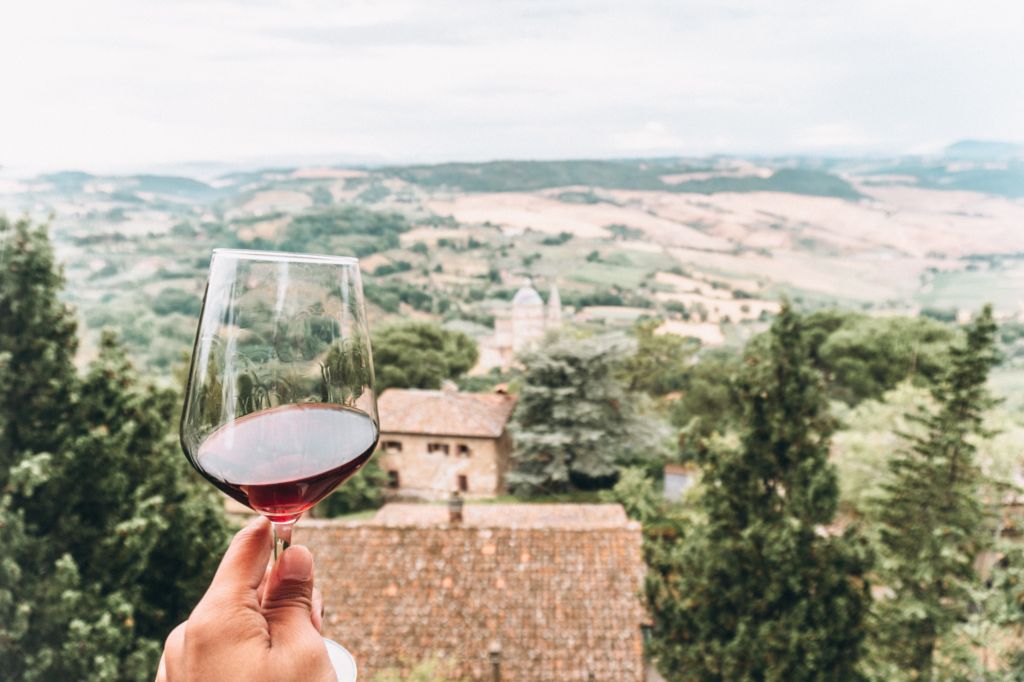
In total, this itinerary is anyone that has one to two weeks of time. This trip can be done starting and ending in Florence. Alternatively, you can also start in Rome and end in Florence (or vice versa). Rome is a good starting point because well, you get to see Rome, and it is a big international airport.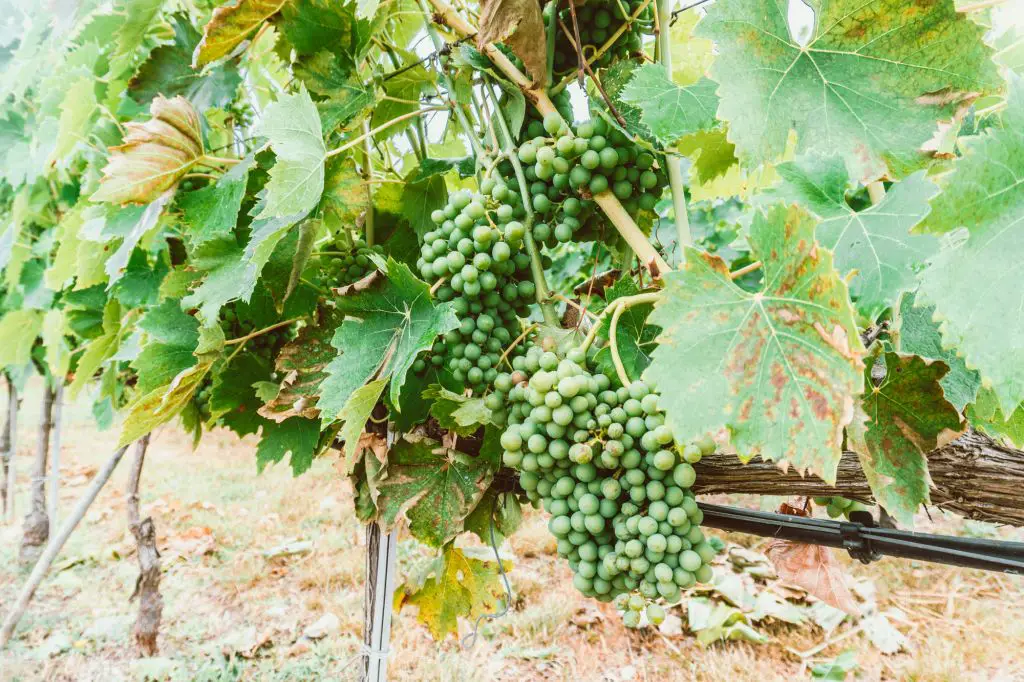
These are the places I visited in Tuscany:
- Florence
- Montepulciano
- Montalcino
- Chianti Region including Siena, San Gimignano
- Pienza
- San Quirica D’Orcia
- Pitiglano
- Orvieto
- Wineries all day, everyday, everywhere
If these places ring a bell and sound like the places you want to visit, this is the perfect itinerary for you! Note that there are SO MANY more villages to visit in Tuscany but these were the ones I saw with the time I had. You don’t need much time in each town so if you want to spend less time wine tasting, and more time village hopping, this is also a possibility!
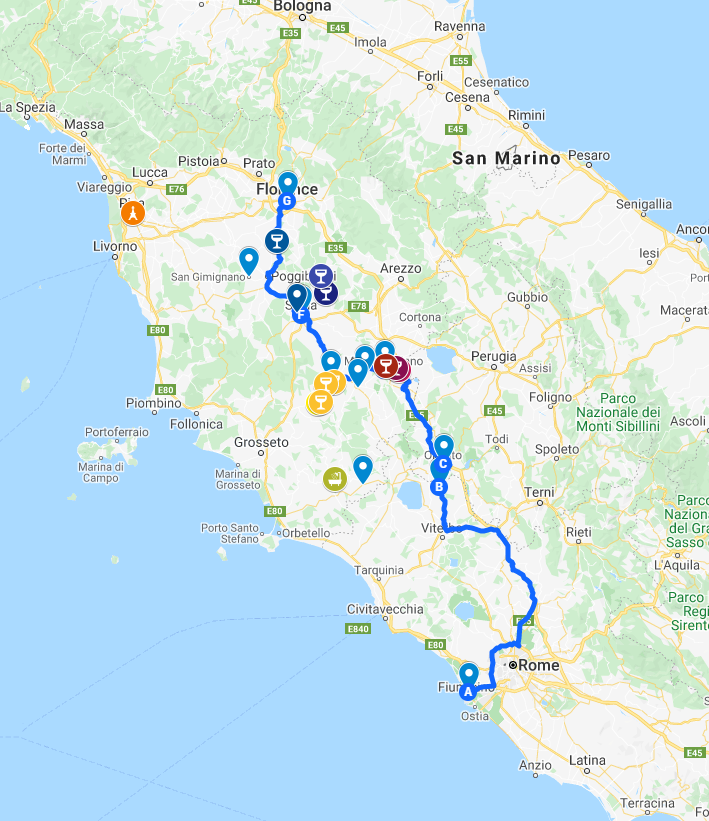
How to get around Tuscany
Unlike other parts of Italy where you can get around by public transportation, you really need to have a car to explore Tuscany. If you’re just planning to visit the main towns like Florence, Siena, Montepulciano etc, then the bus system will suffice. However, if you want to explore the countryside and really immerse yourself in it all, you will need to rent a car.
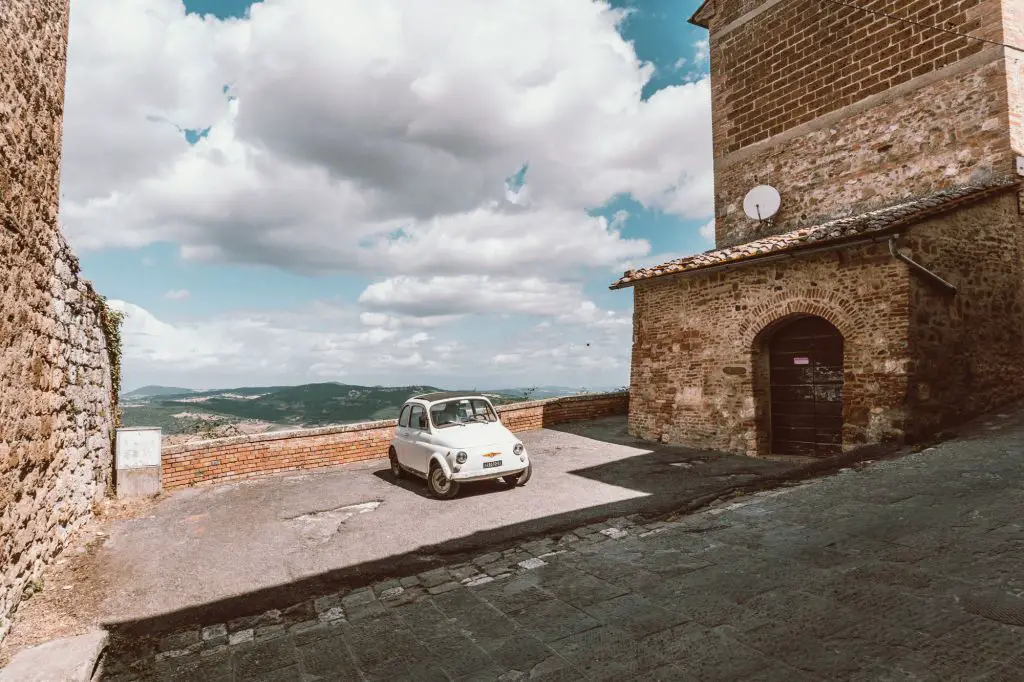
There are no buses that will drop you off at the Brunello wineries in Montalcino for example. There are no Ubers to speak of in Tuscany and taxis are both expensive and elusive. Essentially, you won’t get much wine tasting in if you don’t rent a car which is probably the main reason you want to come here!
Driving in Tuscany
Driving in Tuscany is both simple and beautiful. The Tuscan landscape is famous for its rolling hills that contrast wheat fields, Cyprus trees, and lush green vineyards. It’s a view you won’t tire of while driving.
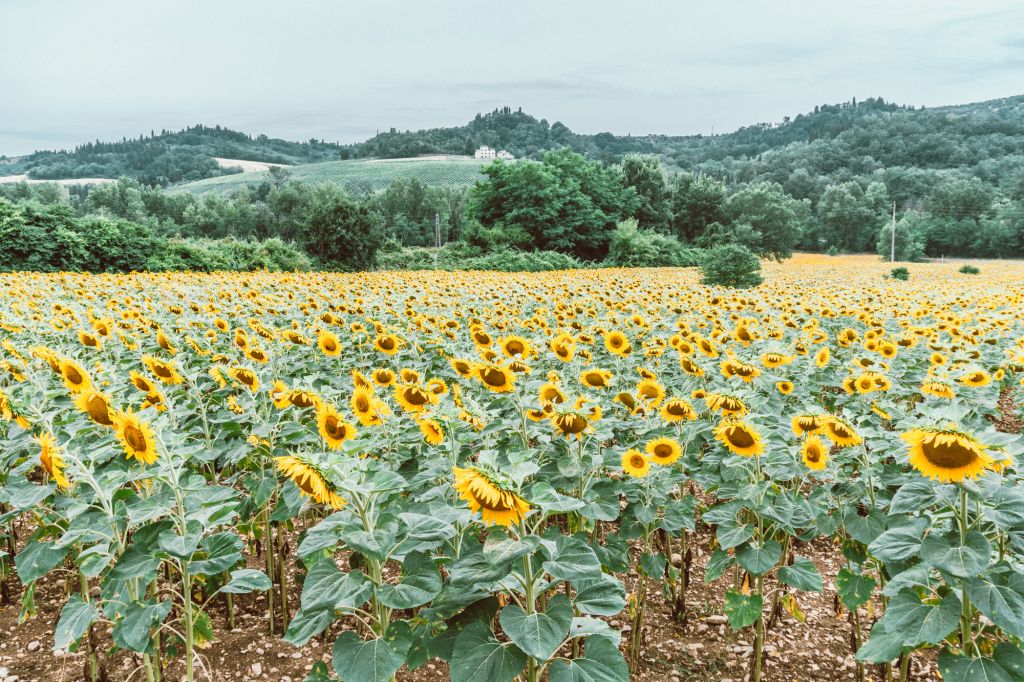
The driving is quite easy and the roads are perfectly fine. The distances between places might seem short but make sure to budget more time because you won’t drive more than 70km/hr at most points. Gas is abundant and easily found all along the way.
Where to stay in Tuscany?
I wrestled with where to stay in Tuscany for a long time. Tuscany is not a big province per se but the roads are small so it takes a long time to get anywhere.
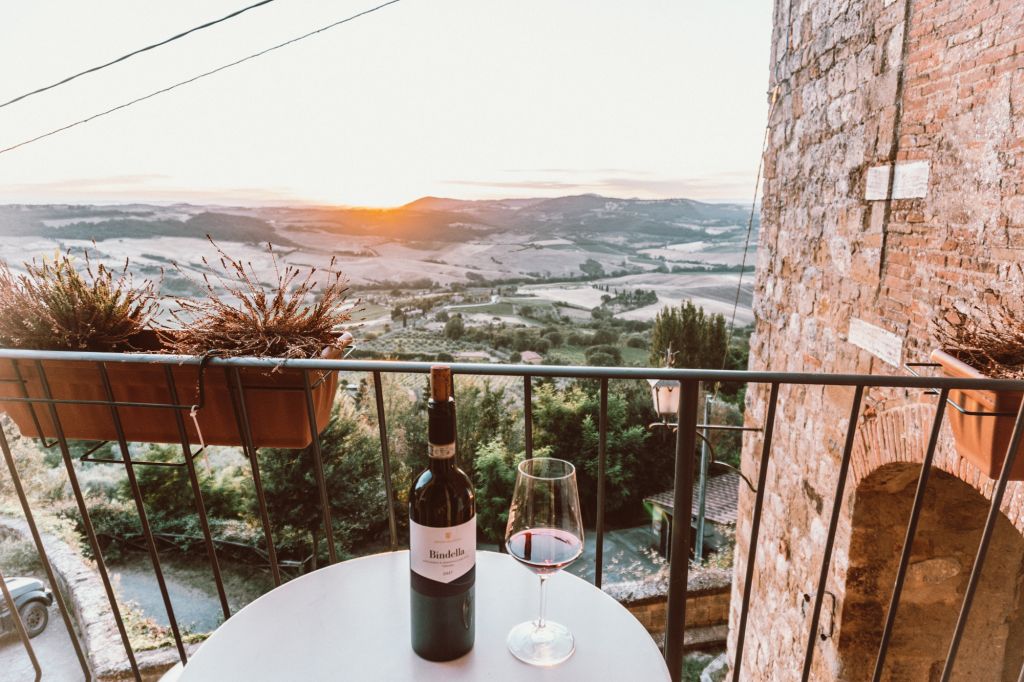
I couldn’t decide whether to stay in Chianti and Montepulciano or just stay in one of the two and make day trips.
Ultimately, I settled on doing day trips from Montepulciano which seemed like a central and livelier town. I only had four nights in the wine region so it would feel a bit rushed to do two nights in one place and then have to drive somewhere else.
I don’t regret my decision and found Montepulciano to be a great central point to explore the region.
Wine tasting in Tuscany
Wine tasting in Tuscany is one of the main events you’ll be doing. Tuscan wine is perhaps the most popular wine in Italy and certainly one of the most popular wines in the world. Even when I was drinking boxed wine as a college kid, somehow I had even heard of Tuscany being this magical wine region in Italy that had high end wine that a kid of my stature should definitely not be drinking at the time.
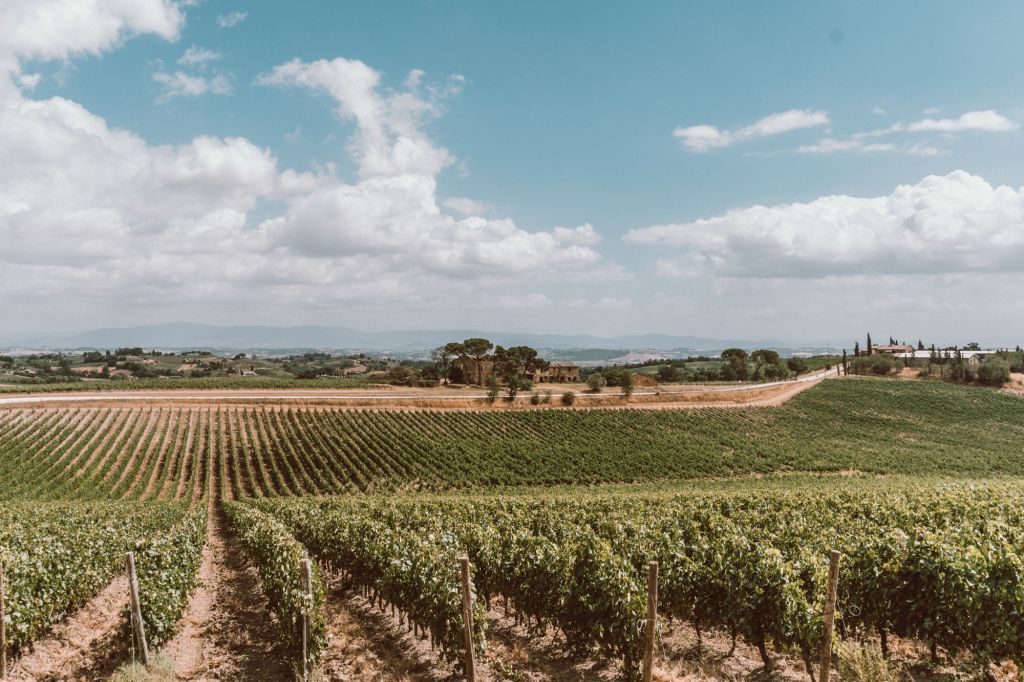
Fast forward a decade later, and here I am drinking my way through Tuscany. And drink I did. I spent five days in the Tuscany area, and each day I would visit two or three different wineries.
How does wine tasting work in Tuscany
I’ve been to many wine regions in the world and each one has its different styles and requirements. My favorite wine region is still without a doubt South Africa’s Western Cape wine region because of its incredible landscapes and the ease of tasting wine. Each winery had a big estate that you could just rock up to and drink wine.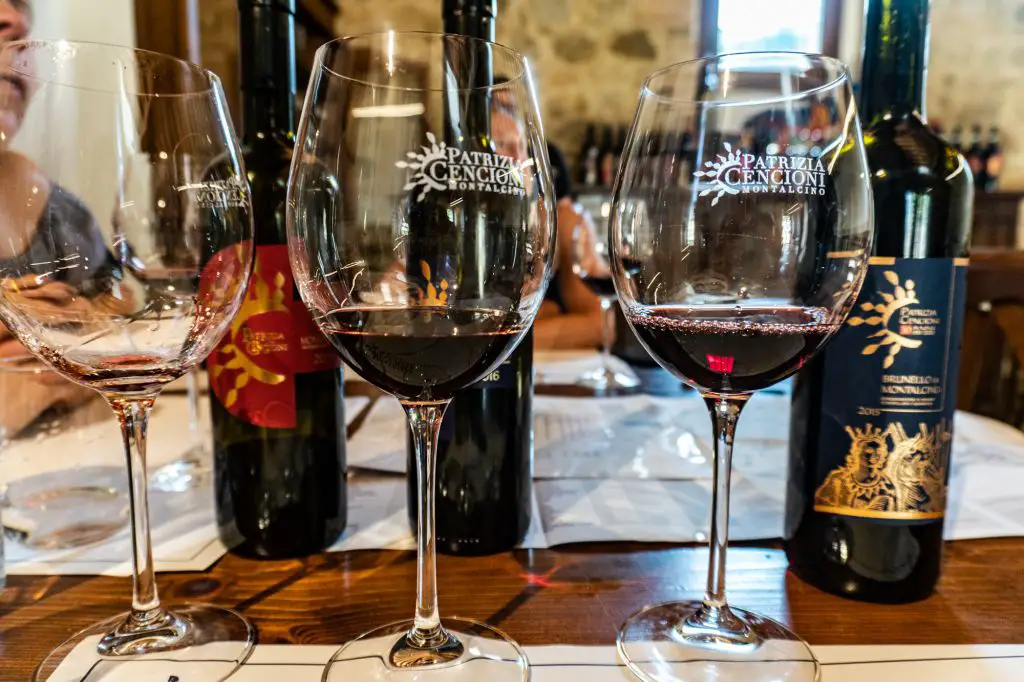
Then you go to places like France or Germany where most wineries are smaller shops without a wine tasting infrastructure set up. The bigger wineries require reservations in advance and always include a tour of the cellars that I could care less about.
Tuscany is somewhere in the middle. There are many smaller producers but it seems like each producer has an estate of some sort on the vineyards with a showroom. I think in high season, making a reservation is definitely the right move but otherwise, you can just show up to a lot of these wineries and enjoy a tasting.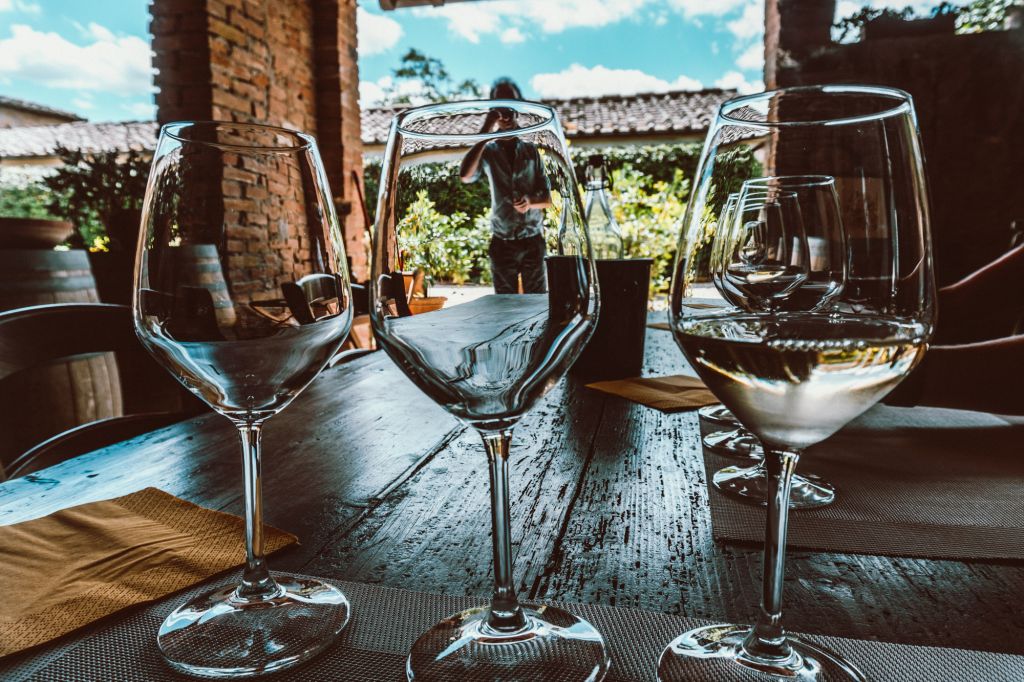
Some wineries have the whole package which includes the wine tasting, tour of the cellars and property, and bread/cheese. Some of them you could just pay to drink wine. I’m definitely a proponent of the latter because I could care less about touring cellars. I’ve done this countless times already and you just end up forgetting everything anyway.
Cost of wine tasting in Tuscany
Tuscany is not a cheap area to travel. In Italy, it is probably one of the most expensive wine regions simply because of the quality of its wine and the name recognition it enjoys.
Having just visited the Douro Valley in Portugal the week before, it was a bit of a shock to see the prices in Tuscany. Wine tastings are definitely pricier. I was paying €15 or more for tastings of three wines. The quality of the wine tastings are quite good however. There was ample amounts of explanations and information however so I was mostly satisfied.
Some of the fancier wineries definitely exude a sense of arrogance and entitlement whereas most of the wineries I went to were on the more relaxed side with very friendly people (as it should be). I really enjoyed my conversations with some of the people about the wine and just about the culture in the area.
Tuscan Wine Summary
Tuscan wines specialize in the San Giovesse grape. This grape is found all over Italy but its most cultivated in Tuscany. Tuscany wineries mostly grow the San Giovesse grapes along with numerous other varieties. The wines in Tuscany mostly focus on this grape.

The biggest regions in Tuscany are
- Montepulciano
- Montalcino
- Chianti
Each region produces wines with the San Giovesse grape but each region has different standards and requirements for the higher end versions of their wines. There are too many rules and requirements to speak of so I will just list some of the most interesting ones:
- Nobilo Di Montepulciano: The wineries here make Nobilo which is 85% San Giovesse minimum, and has to be aged for two years
- Brunello di Montalcino: The most famous wine in the region is without a doubt Brunello. These have to be 100% San Giovesse, hand picked, and must be aged for five years. Yes, 5 years.
- Chianti Classico: The highest grade of Chianti requires 80% Sangiovese grape, and must be aged for a minimum of 12 months. Reservas must be aged 24 months.
Full Tuscany Trip Itinerary
This itinerary starts in Rome, the biggest and grandest historical city in Italy. I actually visited Rome a few times before this trip so I completely skipped Rome this time around. I only flew into Rome because I had a flight from the USA and Rome was the main airport.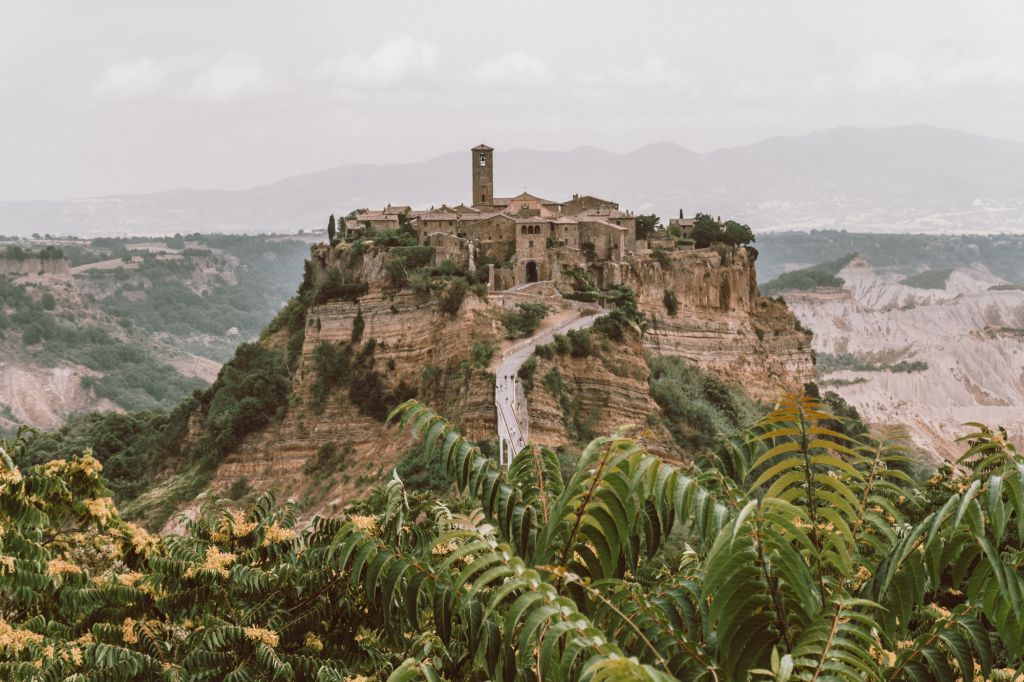
Of course, if you have not been to Rome before and have closer to two weeks to spare, then I would definitely recommend visiting Rome for at least 3-4 nights.
From Rome, I rented a car and drove north through Umbria and into the province of Toscana (Tuscany). On the first day, I stopped in the town of Orvieto for a few hours before arriving at my destination for the next four nights in Montepulciano.
From Montepulciano, I spent one full day exploring the wine around the area including which produces Rosso Di Montepulciano and Nobile wines. In the same day, I drove west to Montalcino (30 minutes or so) and sampled the famous Brunello di Montalcino wines. These were amazing.
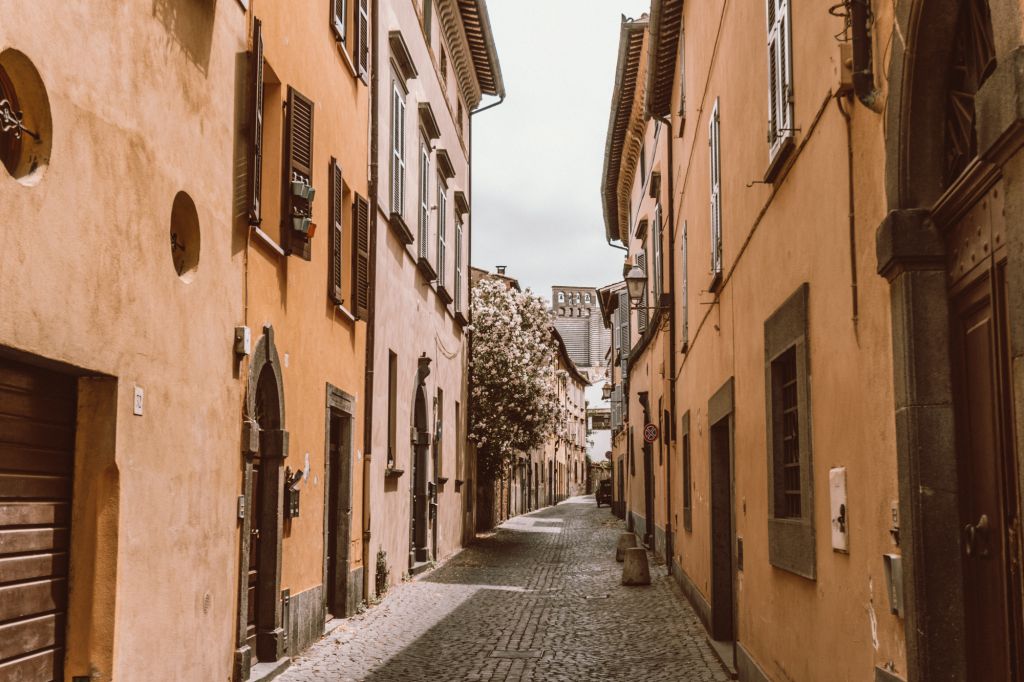
The next day, I spent the entire day exploring the Chianti region in the north. I stopped at a few wineries and visited the towns of Siena and San Gimignano. Definitely need to start early for this one.
The following day, I drove south to the town of Pitigliano which is a very picturesque medieval town built into a hill. It was highly recommended and I really loved the town. I then drove back and tasted more Brunello wines. I think if I could do it again, I would just spent more time tasting the wines around Montepulciano instead of making the drive to the south.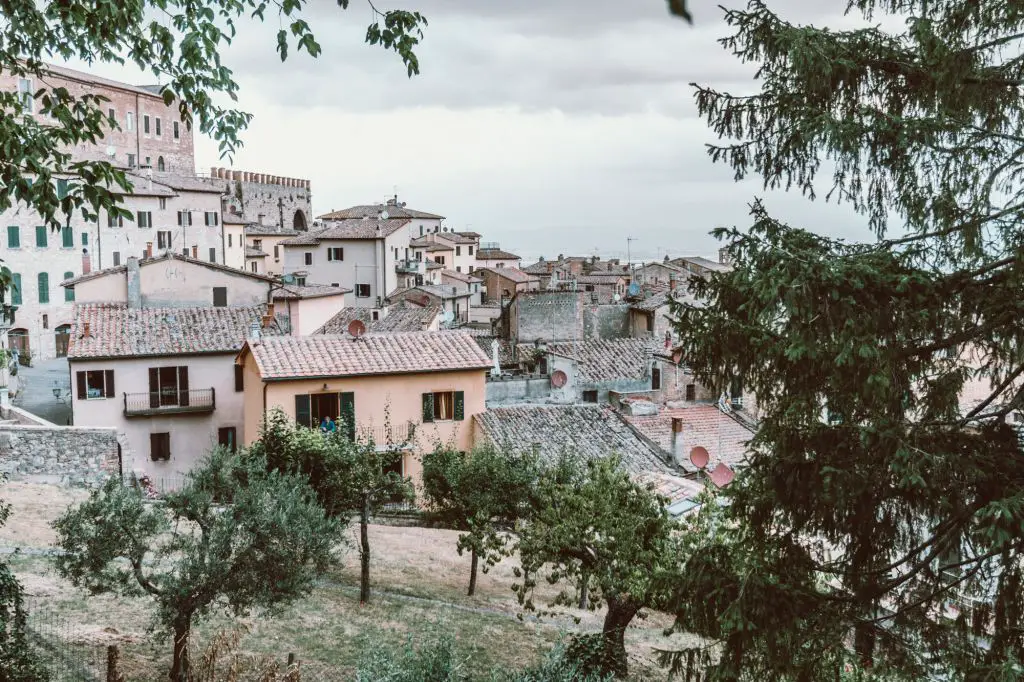
Finally, the next day I drove to Florence, stopping at the famous Antinori winery along the way. I spent three full day sin Florence enjoying the Tuscan capital. There are endless churches, museums, and pretty streets to see in Florence that three nights is probably not enough. One of the days in Florence, I made a day trip to Pisa to see the infamous leaning tower of Pisa, as well as the town of Lucca.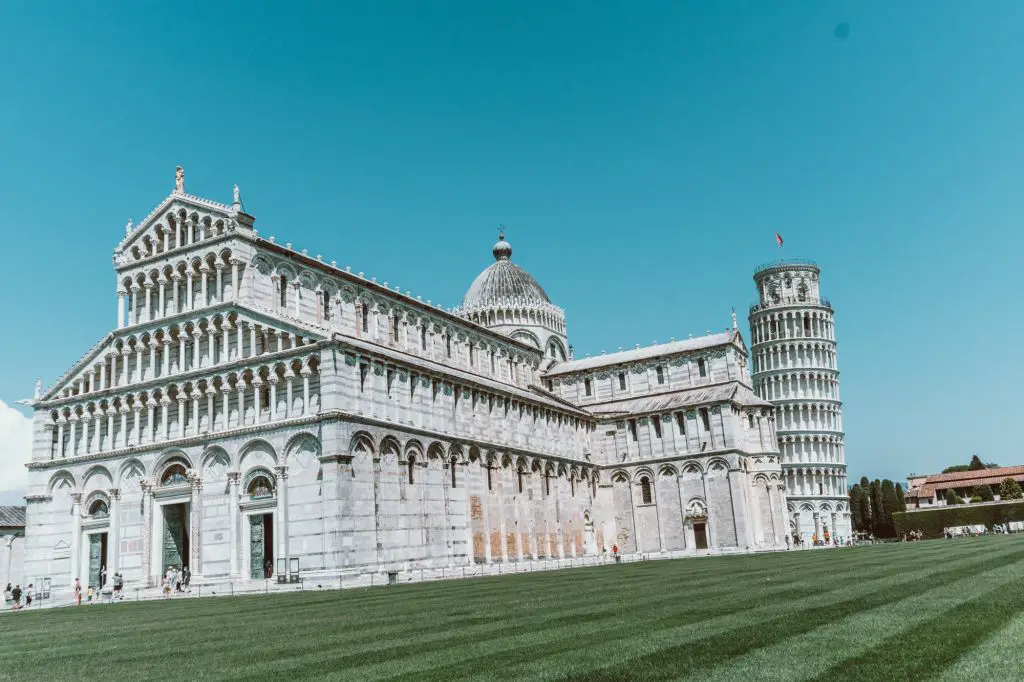
From Florence, I flew back home as this was the end of the trip. If I had more time, I would have definitely continued on to Cinque Terre as that is just a short train ride away.
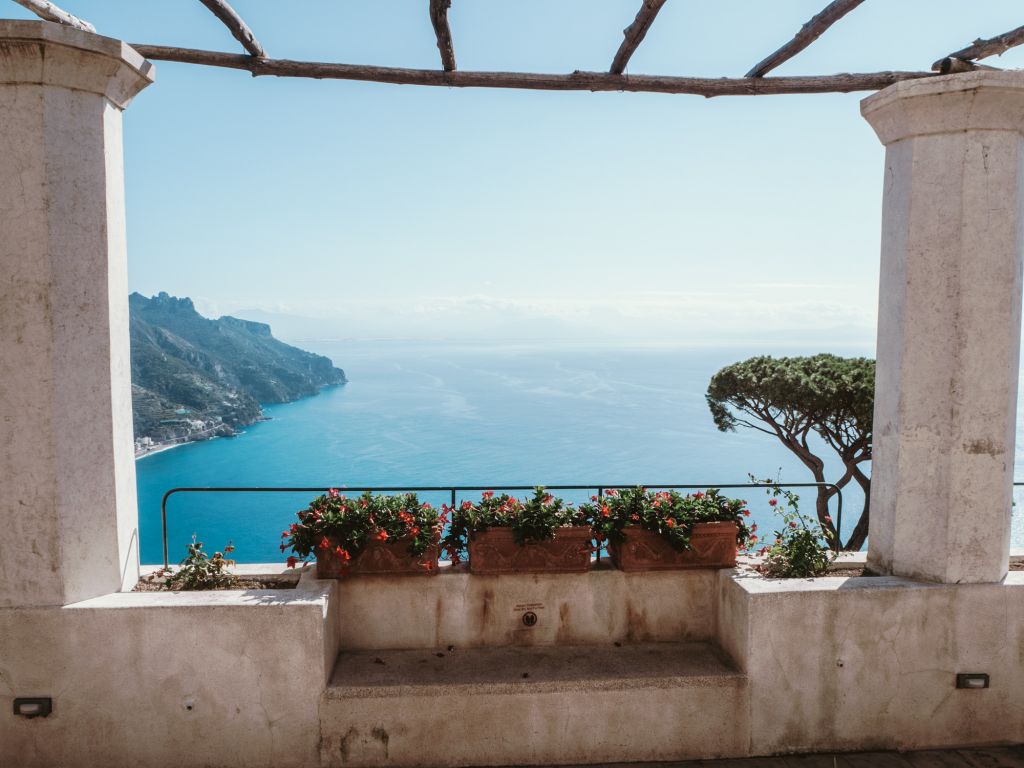
Day 1: Orvieto and Montepulciano
The trip starts in Rome. Again, I only flew into Rome to start the trip as it was the best international flight option.
Had I not been to Rome before, I would definitely spend at least 3 nights here to see the endless sights and history the city has to offer. Nevertheless, the Tuscany adventures must go on.
From Rome, I picked up my rental car from Noleggiare car rental and was on my way northward. The first destination is Montepulciano but as I arrived in the morning, I had most of the day to explore. I stopped in the town of Orvieto as I had heard many good things about this historical town. It’s actually not in the Tuscany province but rather that of Umbria.
Orvieto Town
This little town offers up the most striking panoramic views, a stunning Duomo, a bell tower and underground crypts. Orvieto makes a perfect little day trip from Rome, but it just also happened to be along the route to Tuscany from Rome.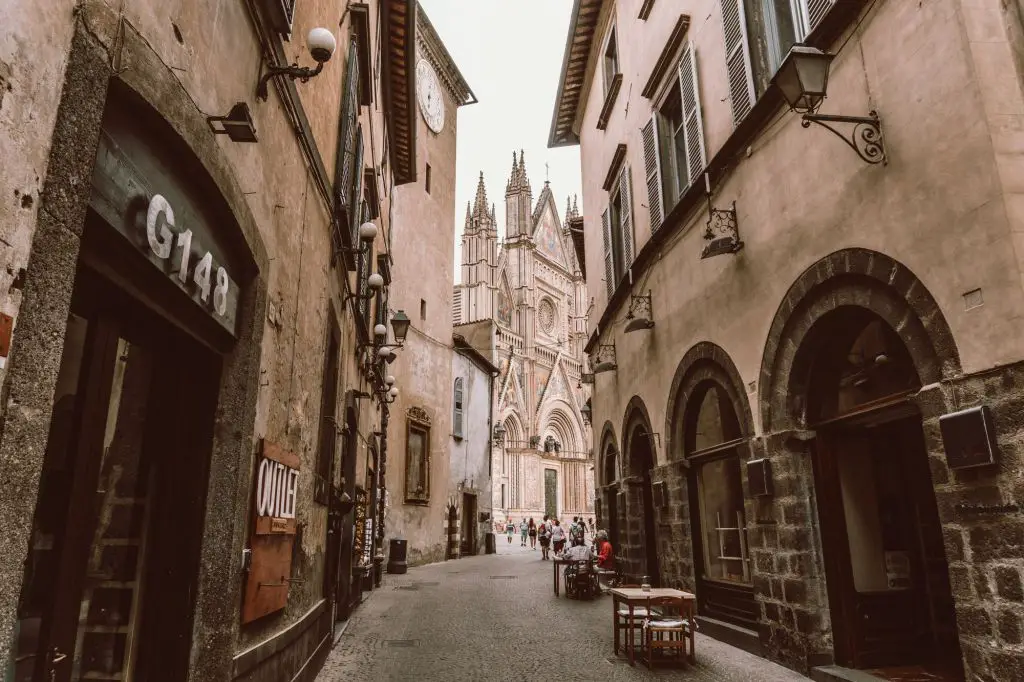
Orvieto is home to incredibly beautiful and quaint Italian architecture. With its picturesque buildings and cobblestone streets, simply walk around the town and get lost in its little alleyways. Before you know it, you’ve come across the stunning and large Duomo that dominates the town. This Duomo is definitely one of the more stunning cathedrals in Italy. The detailing and murals in its facade are breathtaking.
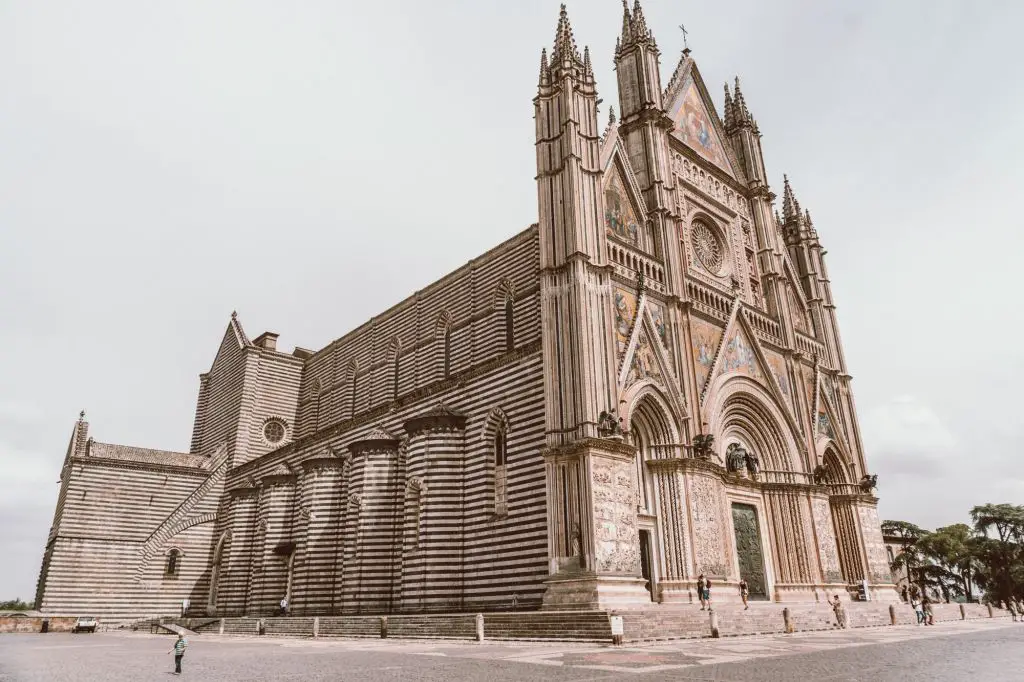
The cathedral is over 800 years old and as you’d expect in Italy, is in as great of condition as ever. It costs €4 to enter and well worth the visit.
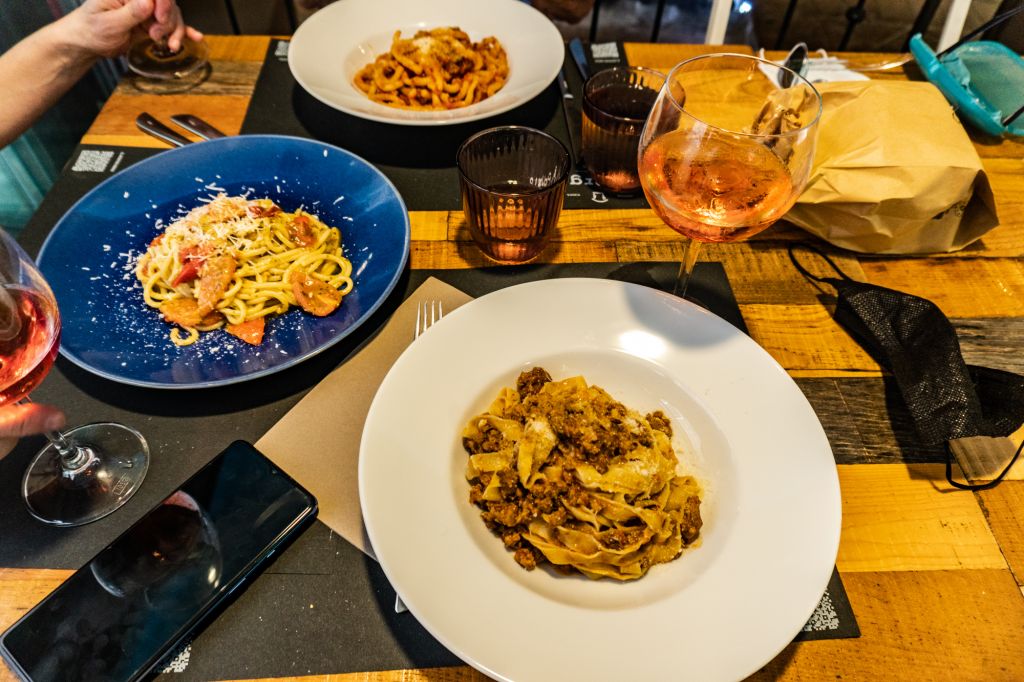
Visit the Belltower of Orvieto
No Italian town is complete without a bell tower. Make your way back onto Corso Cavour to head to Torre del Moro. This tower offers the most breathtaking 360-degree views of Orvieto and is absolutely worth the €2.80 entrance fee. The best part? There is an elevator that takes you half way up so you don’t have to walk like a chump, and then you climb the last stretch of stairs to get to the viewing platform.
Arriving in Montepulciano
After having lunch in Orvieto, it was time to drive towards Montepulciano. If I wasn’t so tired, I would have probably just visited Pilignano on this day and checked it off the list. Instead, I saved that for a few days later in the trip.
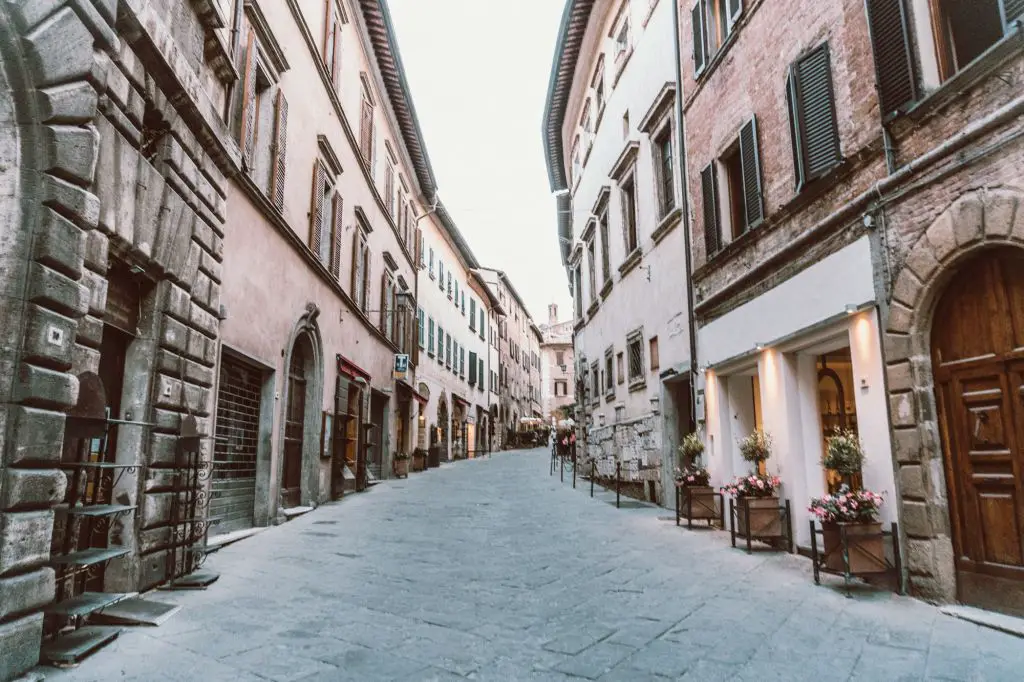
I arrived in Montepulciano in the late afternoon which allowed me enough time to check into my absolutely stunning Airbnb overlooking the Val D’Orcia and enjoy some Aperitivos.
Montepulciano is probably the biggest village/town in Tuscany. I consider Siena and Florence to be cities but among the cute must see traditional villages, Montepulciano is the biggest.
Montepulciano is one of many hilltop towns in Tuscany. Its beautiful Medieval buildings located on the top of a hill makes it incredible to look at from afar. While in the town, there are beautiful street after beautiful street for you to walk through.
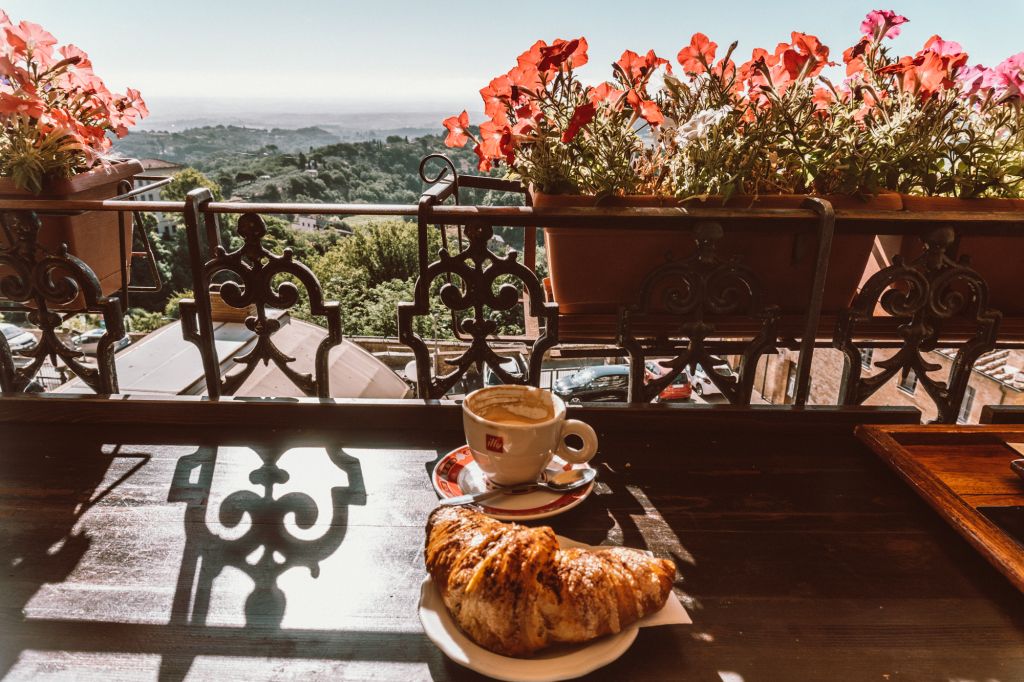
I really enjoyed staying in Montepulciano as I found it to be small enough to maintain that Italian small town charm, but big enough where there are plenty of wine bars and restaurants. I heard in normal times, this place gets a little crazy during the summer months but it was just perfect for me in COVID summer 2021.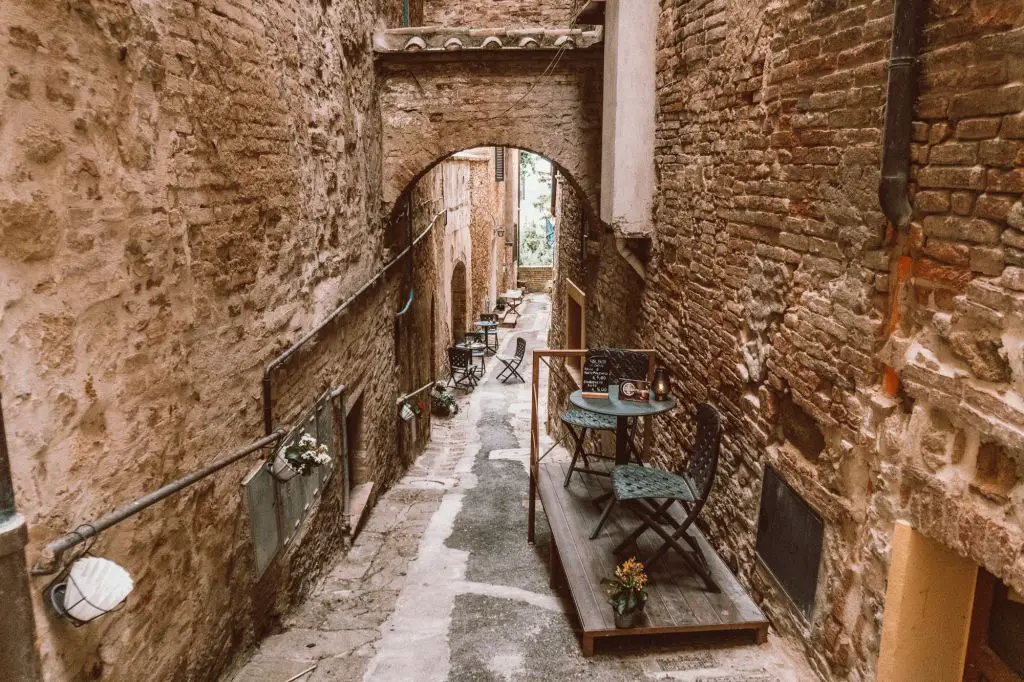
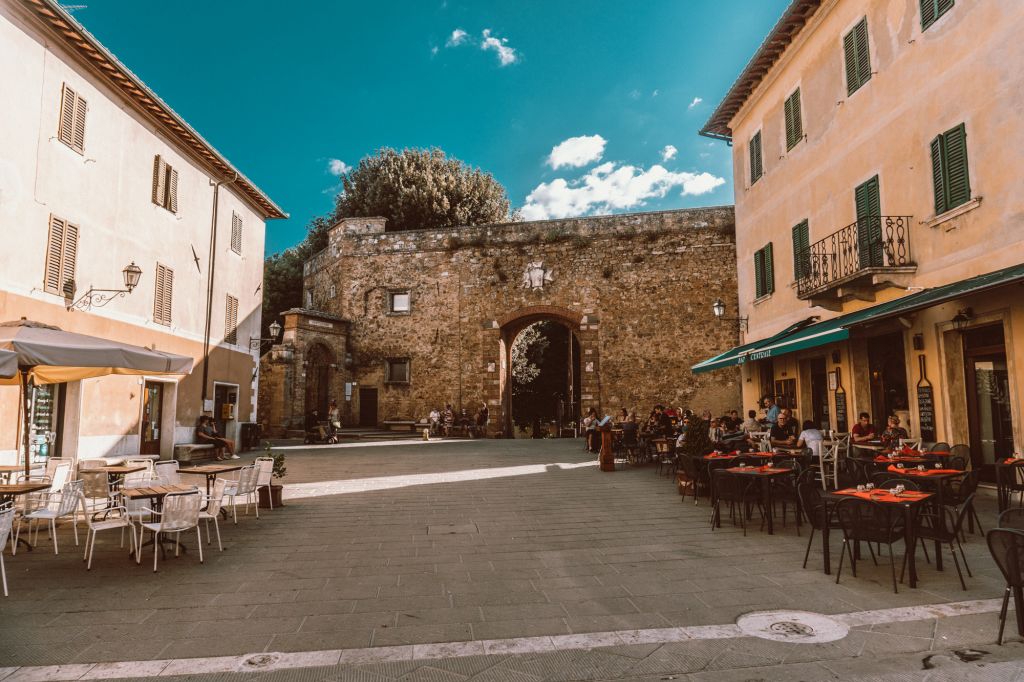
Make sure to make a reservation at Osteria Acquacheta which is famous around the region and serves a delicious Bistecca Florentina. The pastas are also incredible here so make sure to try the pasta with tartufa (Truffles).
Day 2: Montepulciano and MOntalcino
The day is long so make sure to have an early start. Wineries open between 9:30 and 10:00am on most days.
Wine tasting at Bindella Winery
The first stop is the Bindella winery which came highly recommended from my Airbnb host. This winery is one of the biggest and grandest wineries in the Montepulciano region. It is modern, spacious, and has absolutely spectacular views of the Tuscan landscape with a beautiful tasting room overlooking it.
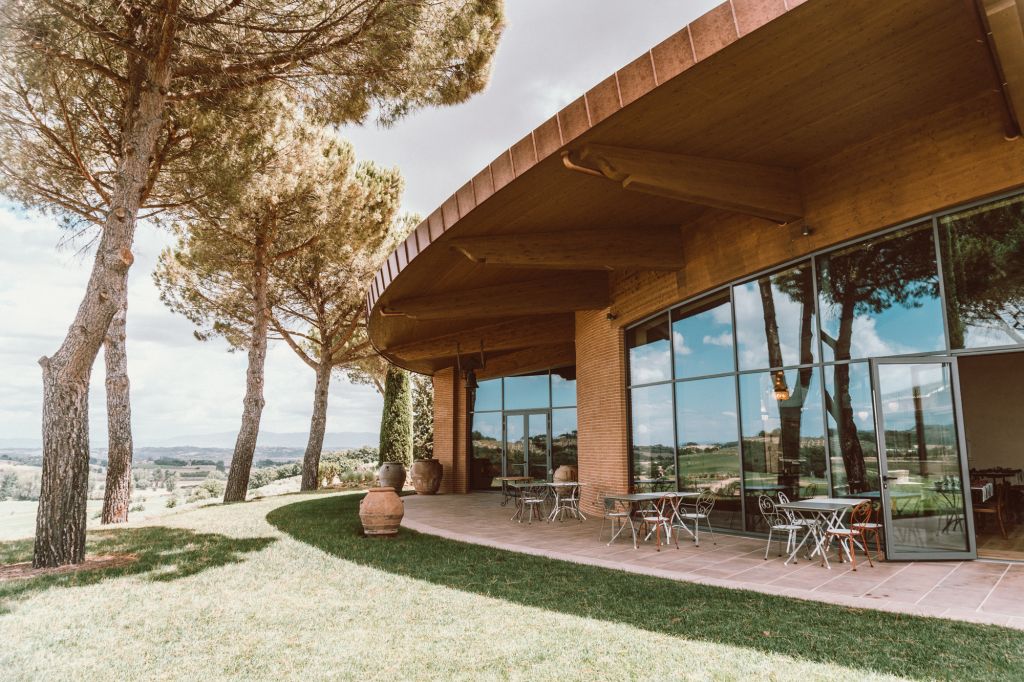
We just showed up without a reservation and had our first of many tastings of Tuscan wines. Being in Montepulciano, I learned all about the wine production here and about the Sangiovese grape. I tasted a basic Rosso Di Montepulciano from Bindella, as well as their higher end Nobilo wines.
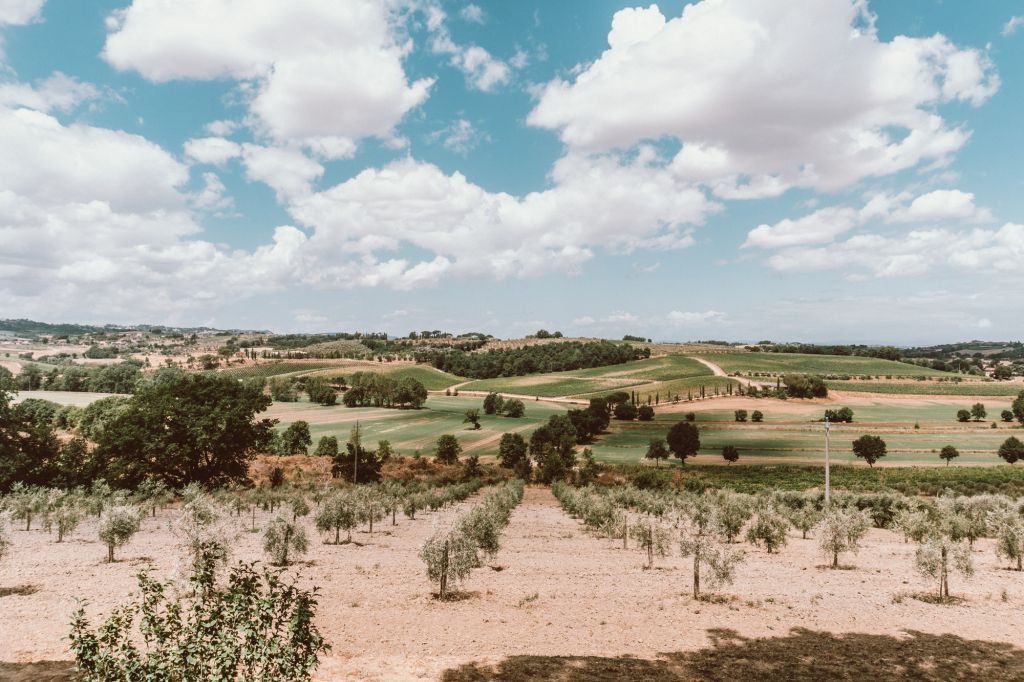
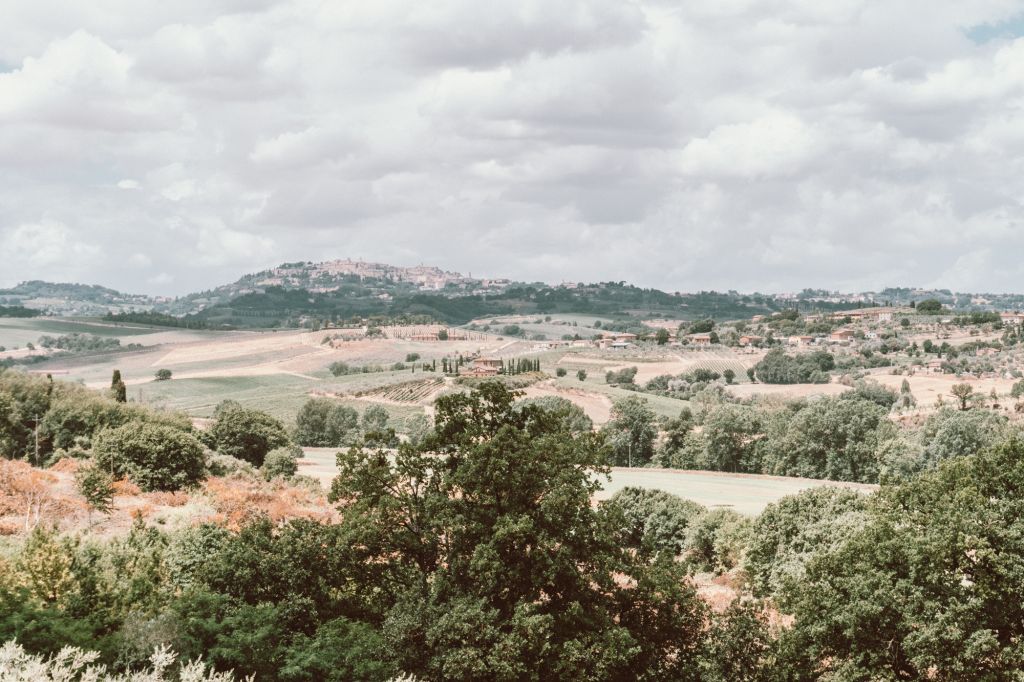

Delicious, and beautiful views without a doubt. The tastings are a bit pricey however at 21 euros.
Lunch around Pienza
Tuscany is also home to the very cute town of Pienza. Not only is it a beautiful Tuscan town, but it is also home to the famous and delicious Pecorino cheese. Made from sheep, this cheese is commonly used on famous pastas like cacio e pepe.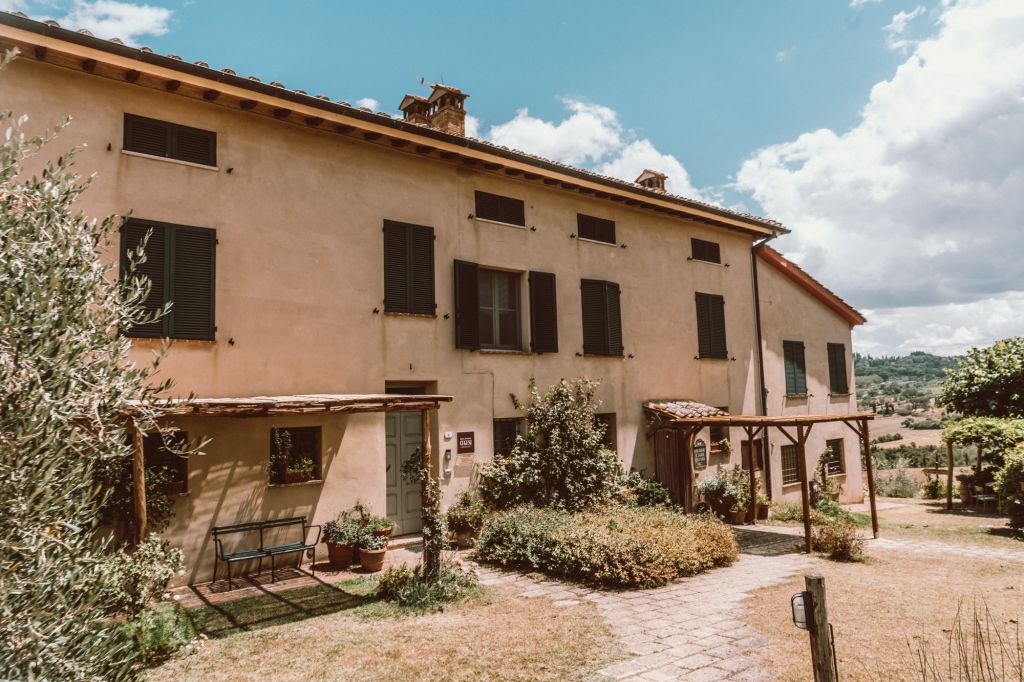
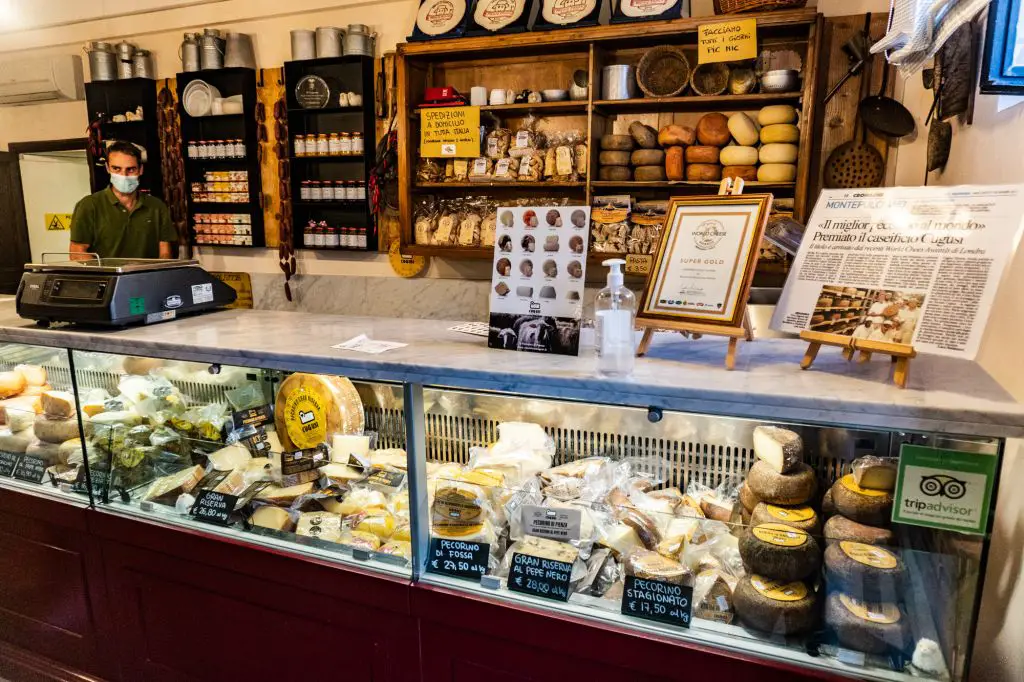
One of the best places to try Pecorino is at the Cugusi Silvana farm. Located right outside of the town, this farm produces pecorino and has an onsite shop that provides tastings as well as the ability to create your own picnic basket. Once you’ve selected your cheese and meats (I’d recommend tasting the more aged pecorinos), you can take it and enjoy it on their properties which have stunning views of the Tuscan landscape.
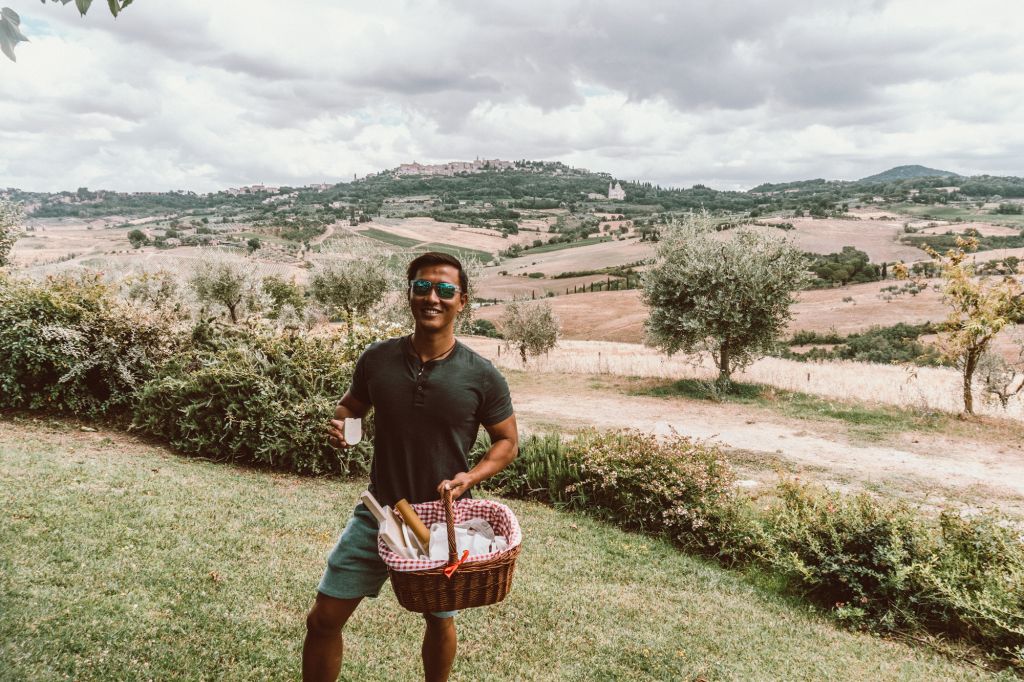
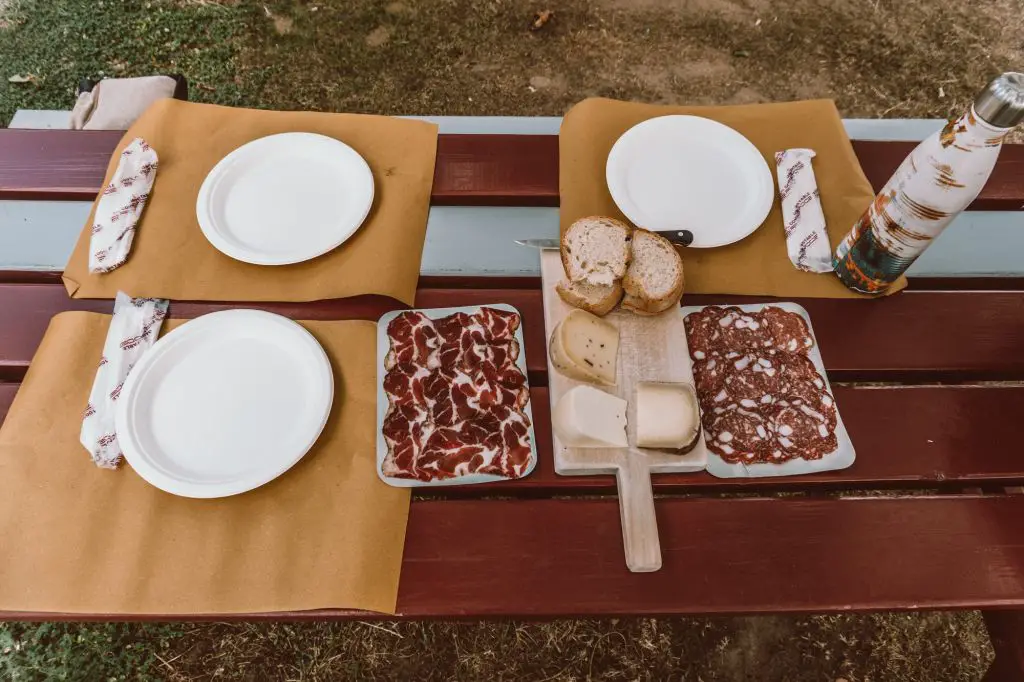
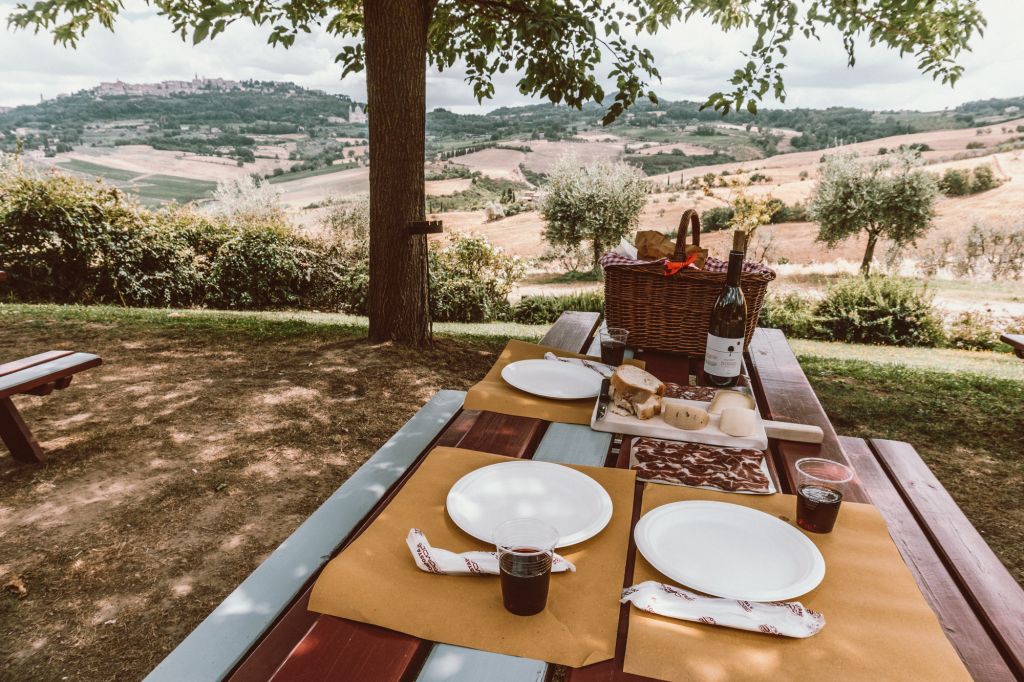
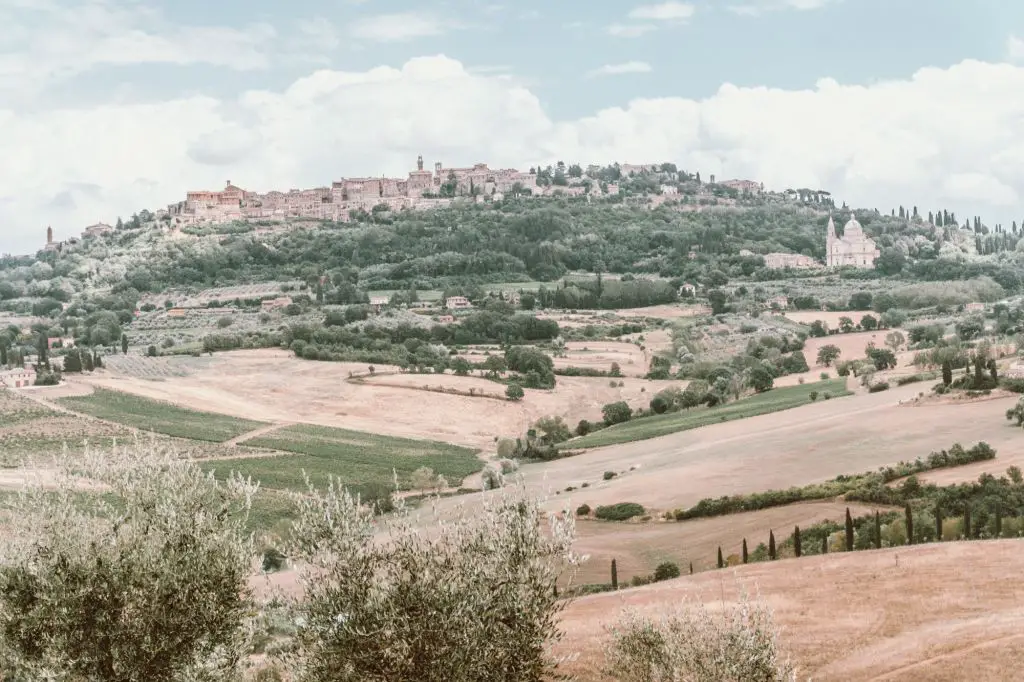
This is every Italian lovers dream. Eating outside on the rolling hills of Tuscany enjoying a glass of Montelpuciano while eating delicious bread and cheese.
Montalcino Town
After lunch, head to Montalcino town, another beautiful and picturesque hillside town in Tuscany. It is a bit smaller than Montepulciano with one main street to walk through. Nevertheless, it is incredibly picturesque with numerous churches and countless wine shops selling Brunello di Montepulciano.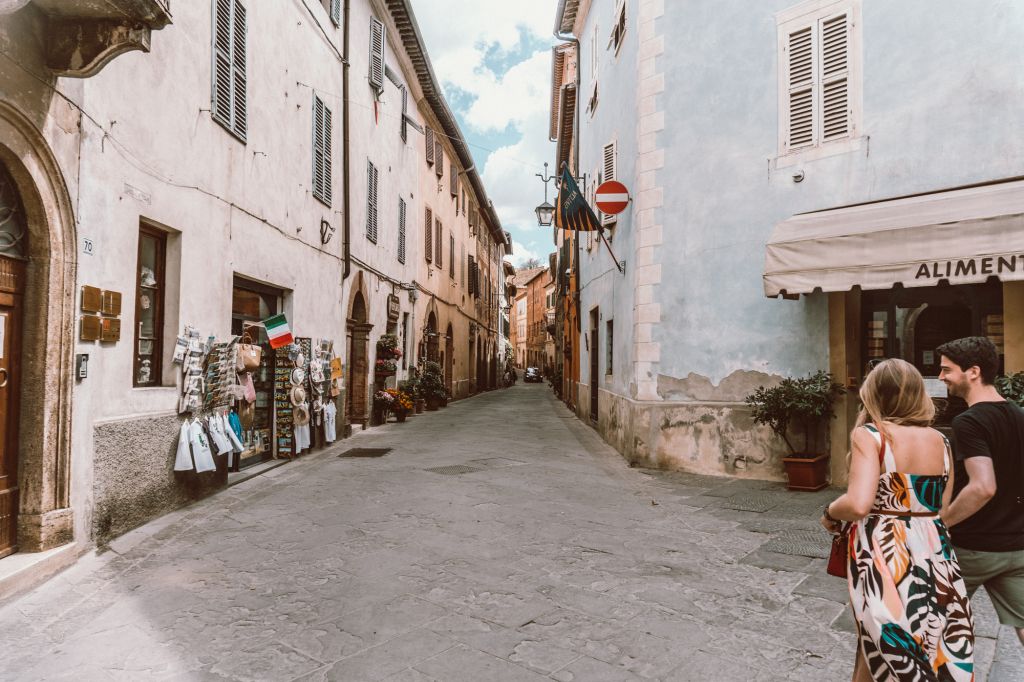
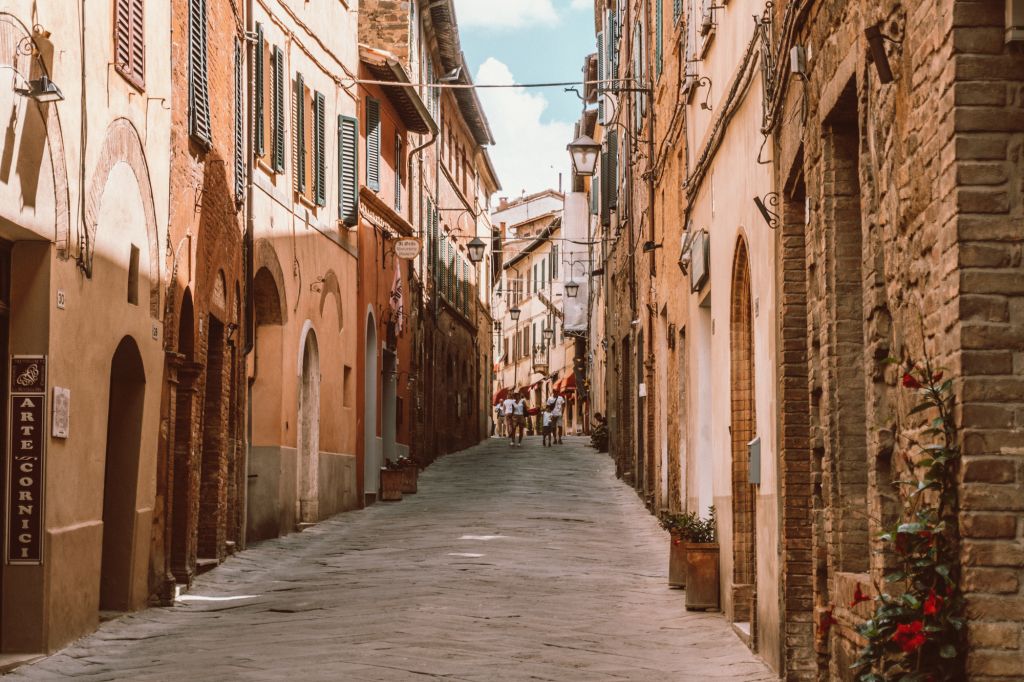
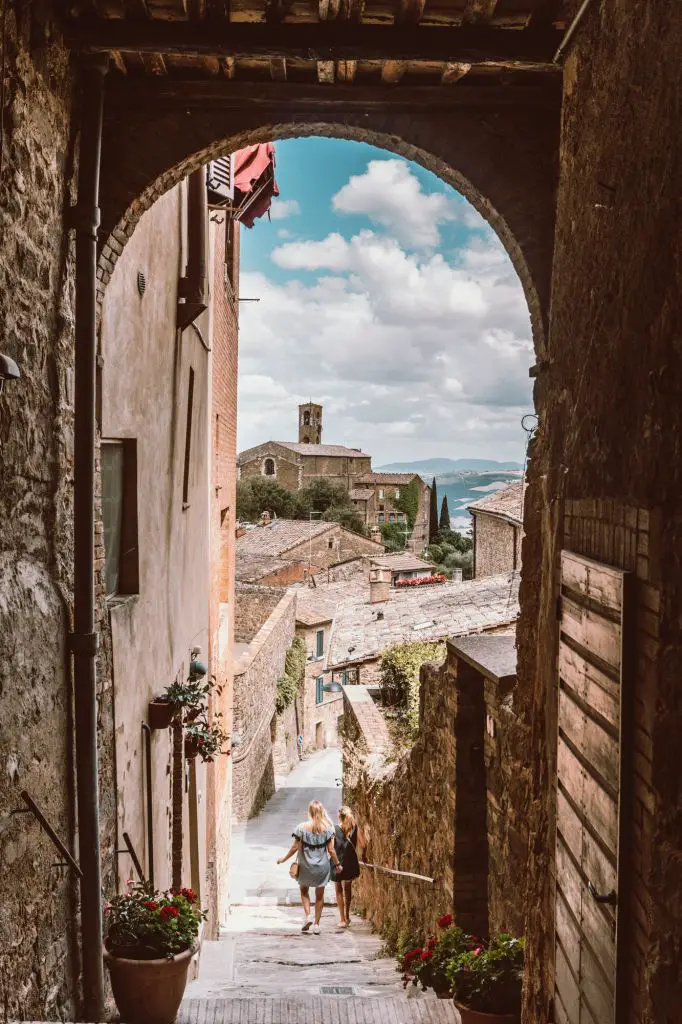
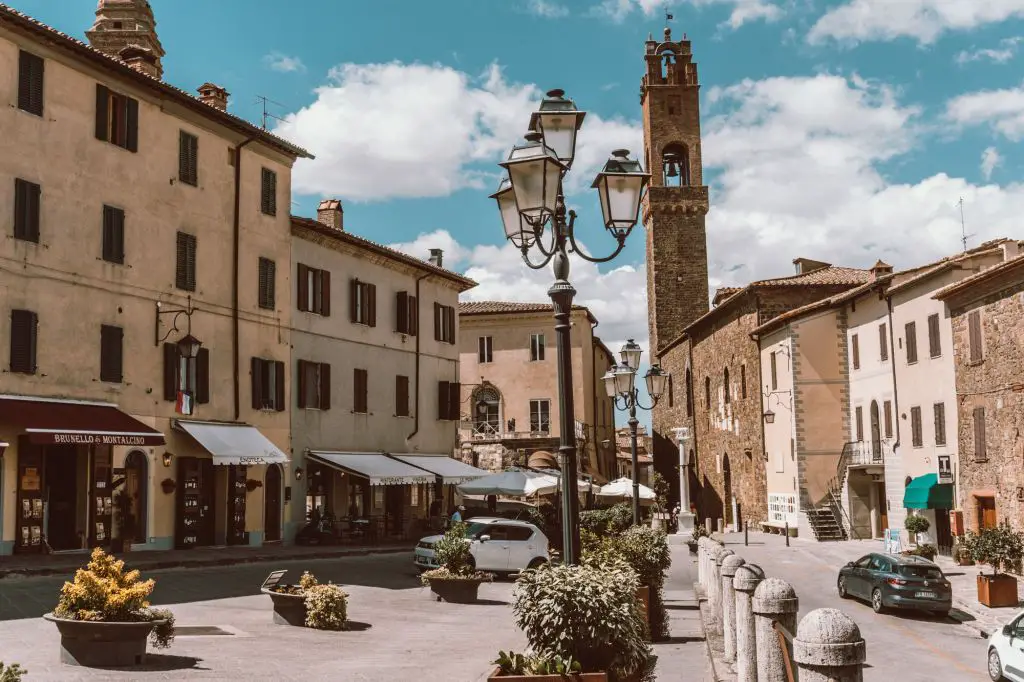
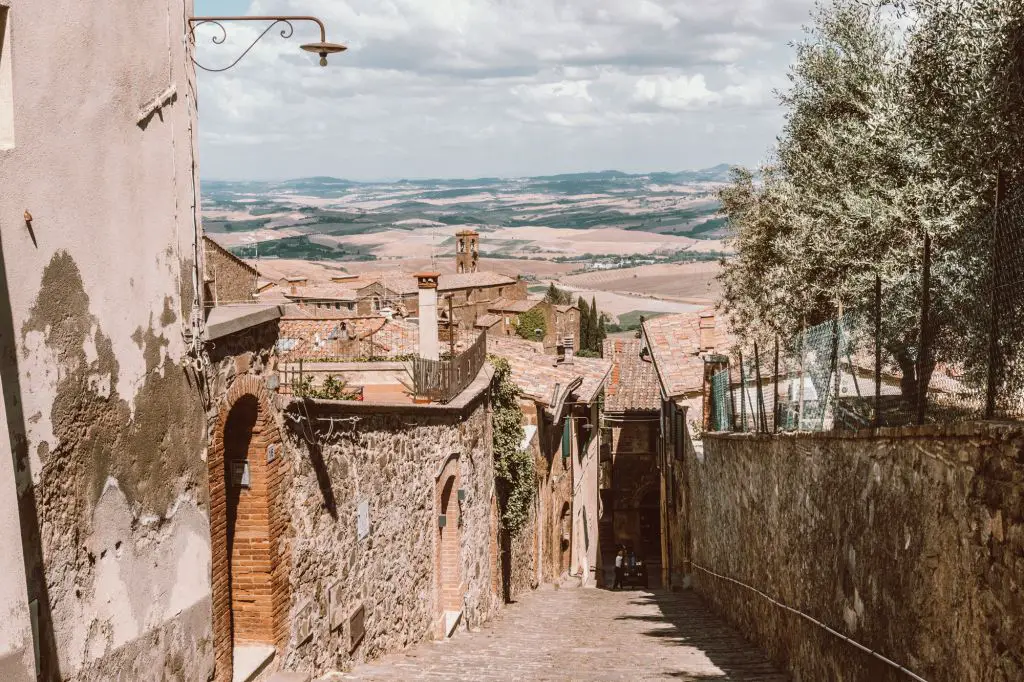
Next stop, wine tasting of Brunello!
Azienda Agricola Patrizia Cencioni – Brunello di Montalcino Winery
I must say I really lucked out when discovering this winery located just outside of Montalcino.
Azienda Agricola Patrizia Cencioni winery specializes in producing Brunello di Montalcino. Like the wineries around Montepulciano, the wineries around Montalcino are the only ones that can produce the world famous and delicious Brunello wines. These wines are 100% Sangiovese grapes and must be aged for a minimum of 5 years. In 2021, that means the newest vintage comes from 2016!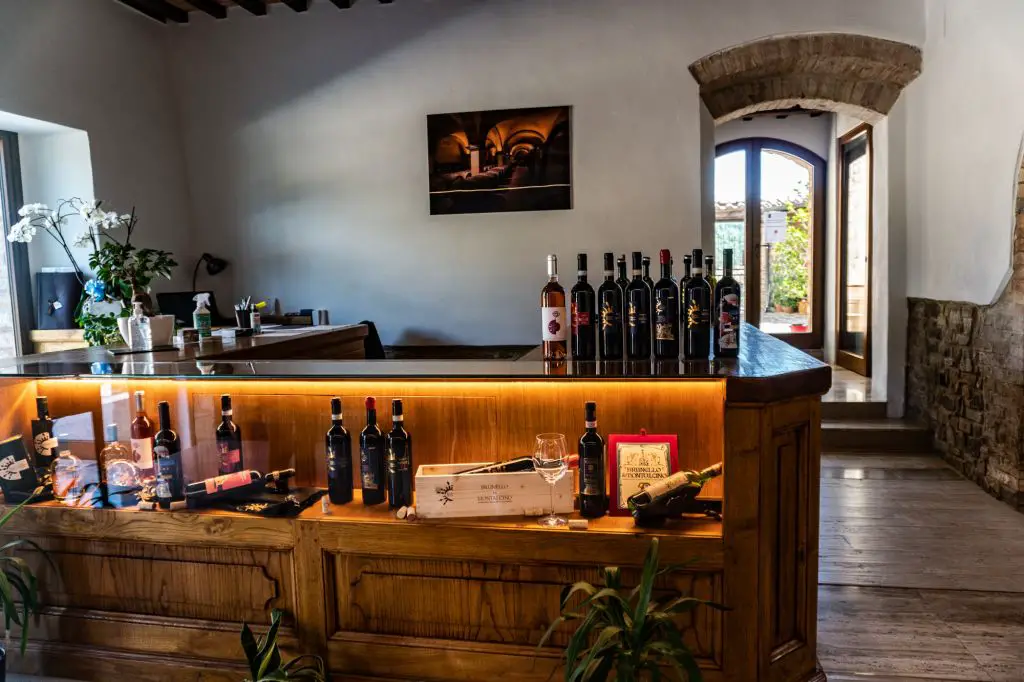
These wines are extra smooth, full bodied, and just pure deliciousness. As you’d expect, the wines are more expensive because of the complex and long process it takes to produce. The winery was amazing because they allowed us to taste all of their Brunello and Rosso wines for free! They didn’t skimp on the pours too and I was just in heaven afterwards.
I ended up buying a few bottles because Brunello di Montalcino bottles outside of Tuscany can be very expensive.
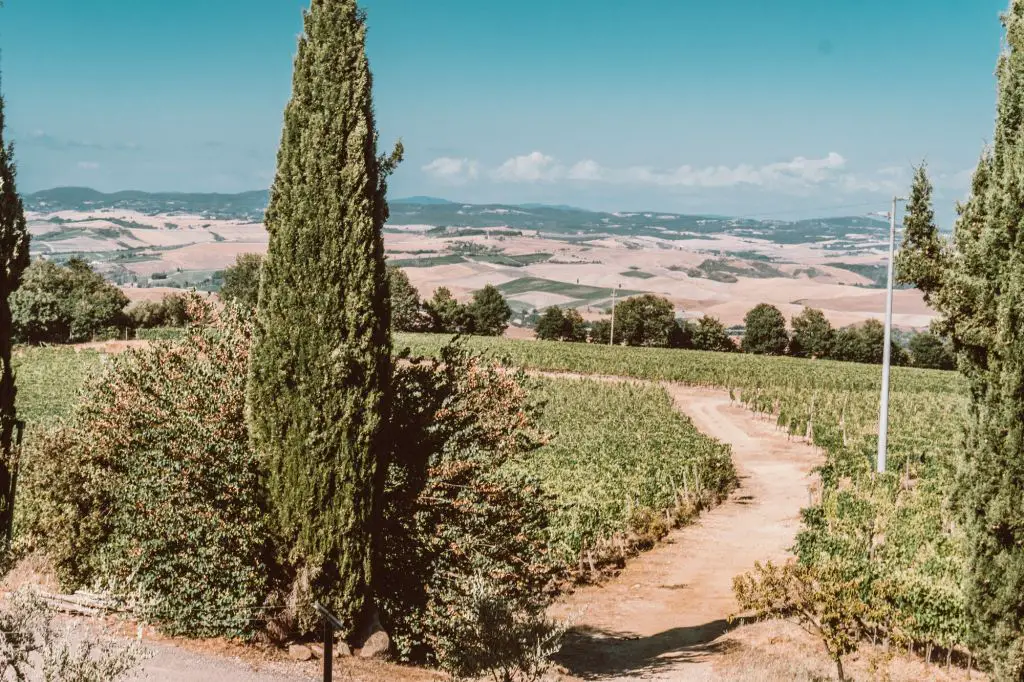
San Quirico D’Orcia
Last but not least, we drove to the town of Orcia which was on the way back towards Montepulciano. I had just heard this was a cute hilltop town and that’s exactly what it was. There was not much here besides the one street that stretched throughout the city.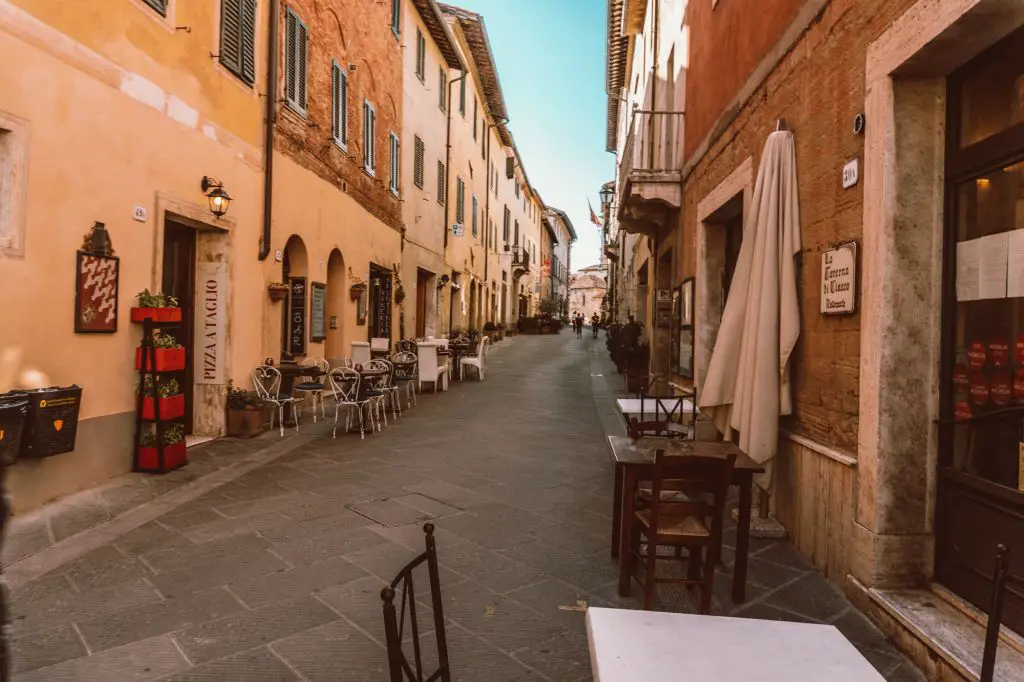
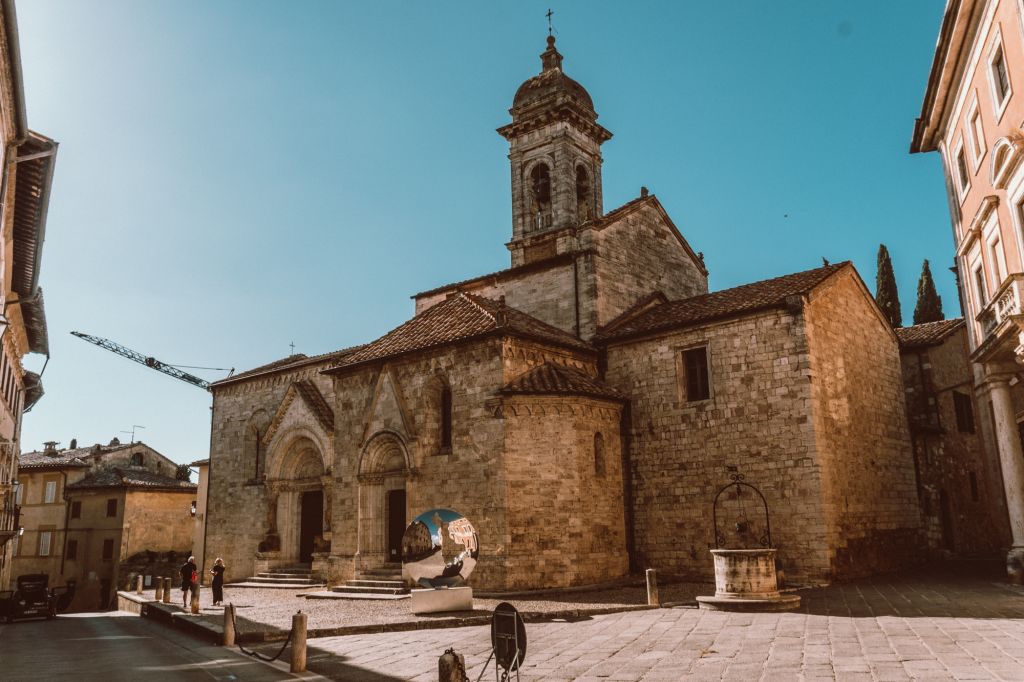
Had a quick aperitivo here before heading back to Montepulciano for dinner.
Day 3: Chianti Region
The next day was focusing on exploring the Chianti wine region of Tuscany. Chianti is the largest and most well known of the areas in Tuscany. It produces about half of the total wine output of Tuscany.
There are also countless wineries in Chianti to choose from so of course one day is not nearly enough to experience everything.
Castello Brolio
First stop for the day is the famous Castello Brolio. It’s a giant castle and residence that produces wine in the Chianti region. The castle is open for tourists and costs €6 for the entrance. The entrance fee also includes a small wine tasting at their wine shop nearby.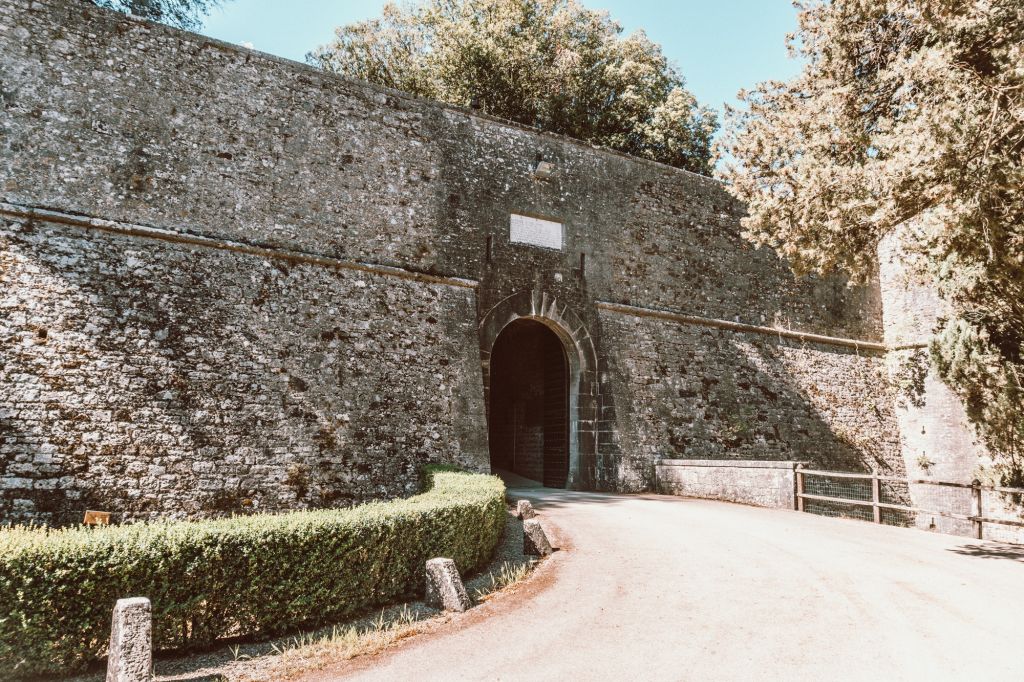
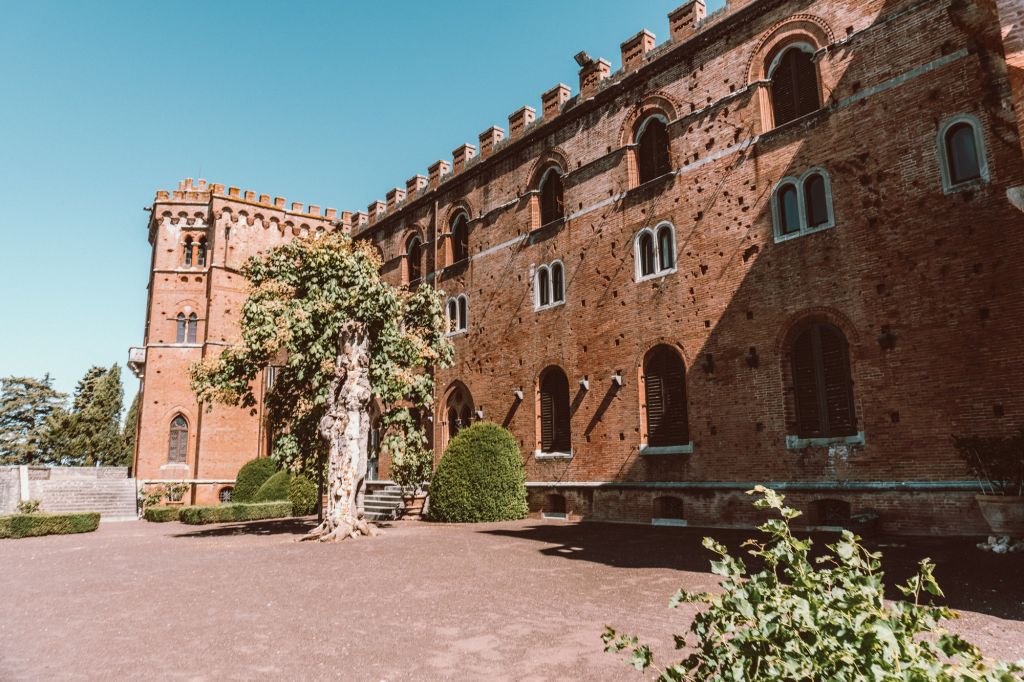
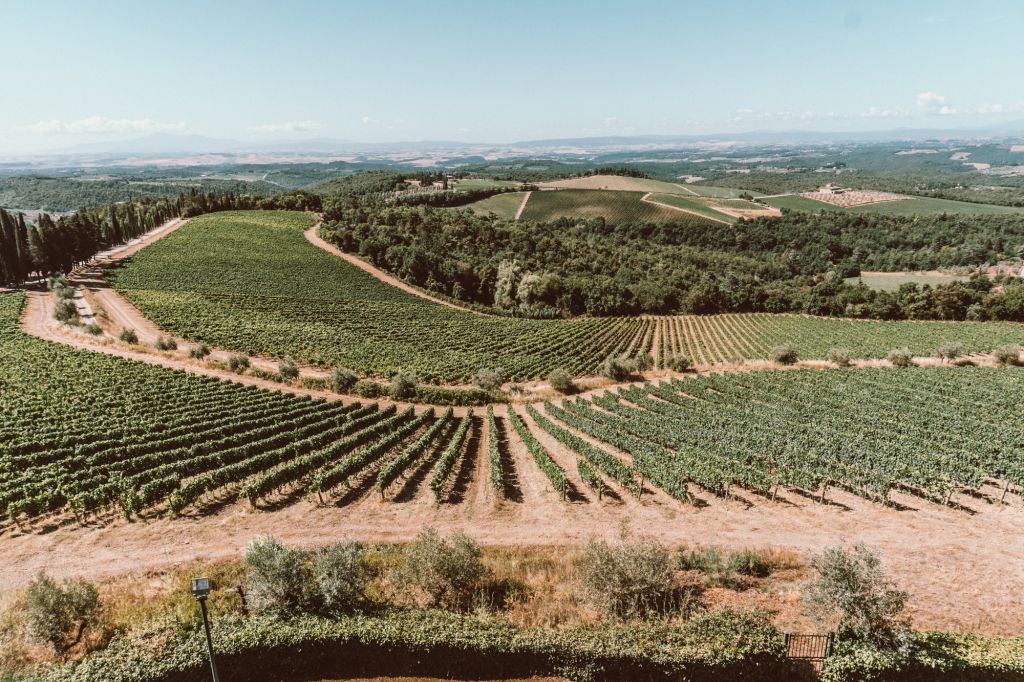
The grounds of this castle are beautiful, albeit not as pretty as the castles I’ve become accustomed to living in Germany. Nevertheless, the views from the winery are absolutely gorgeous. You can see the whole valley of Chianti here.
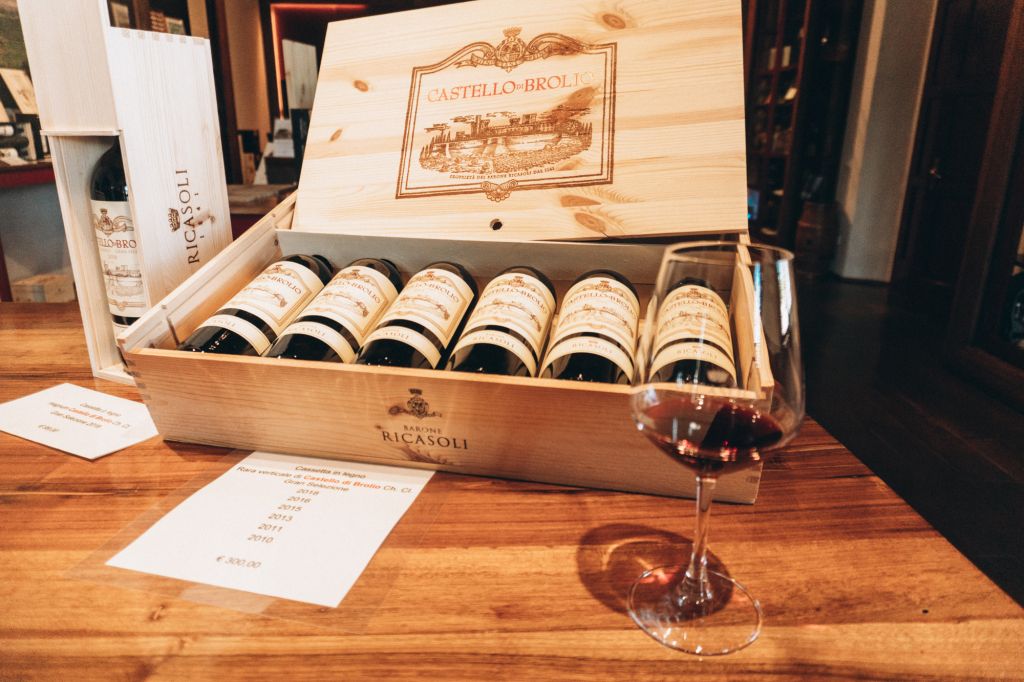
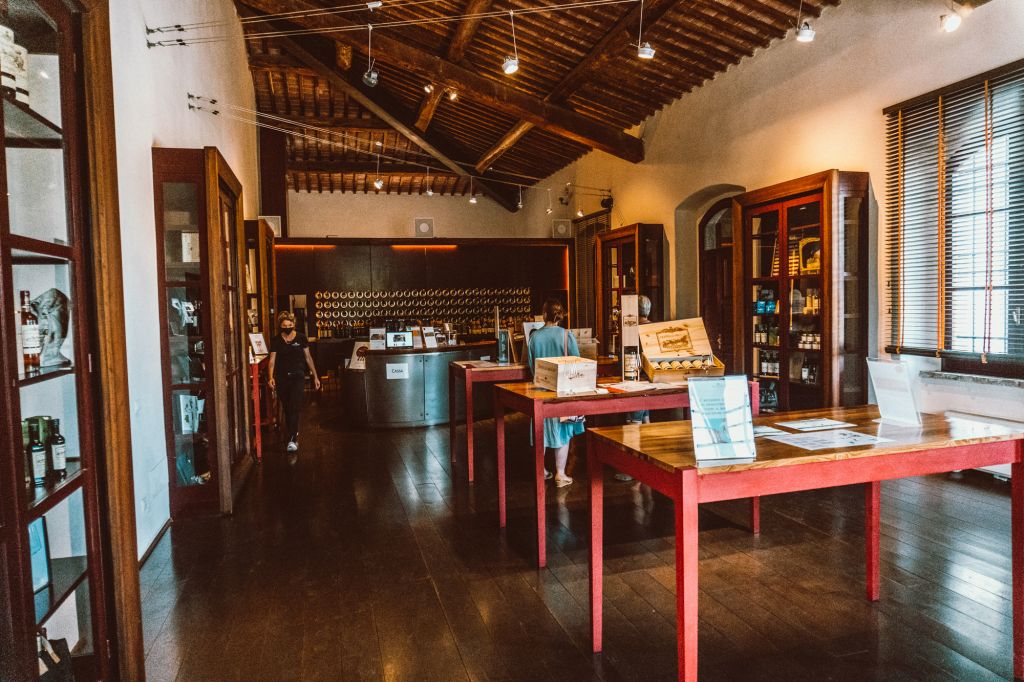
I will say that I found the landscape near Montepulciano and Montalcino more picturesque than in Chianti. You will not go wrong in either place however!
La Lastra Winery
Next stop was a wine tasting at La Lastra Winery just outside of the town of Siena. This winery was one of the first BIO wineries in Italy. The owner came and gave us a fantastic wine tasting giving us hearty pours and very descriptive explanations.

The property was also fantastic and screamed of Tuscan charm.
Siena Town
For lunch, I decided visiting Siena was a must. Siena is the second largest city in Tuscany after Florence and makes for a very easy day trip.
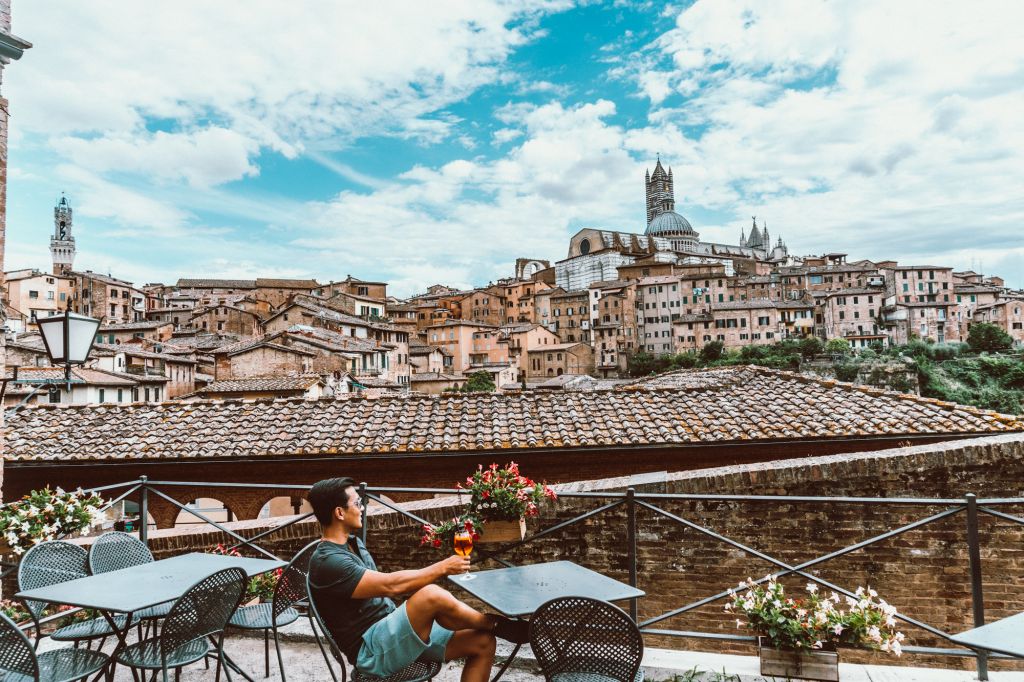
Siena is definitely worth visiting simply for its beautiful architecture, Duomo, and quaint little streets. I found the views of Siena from afar to be very pretty as well.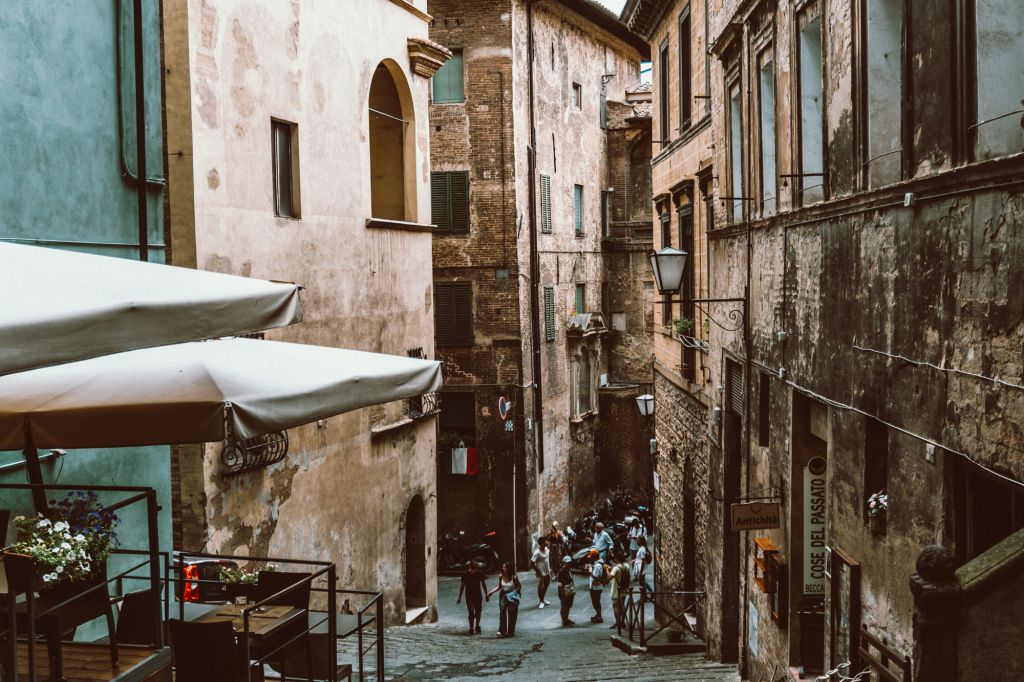
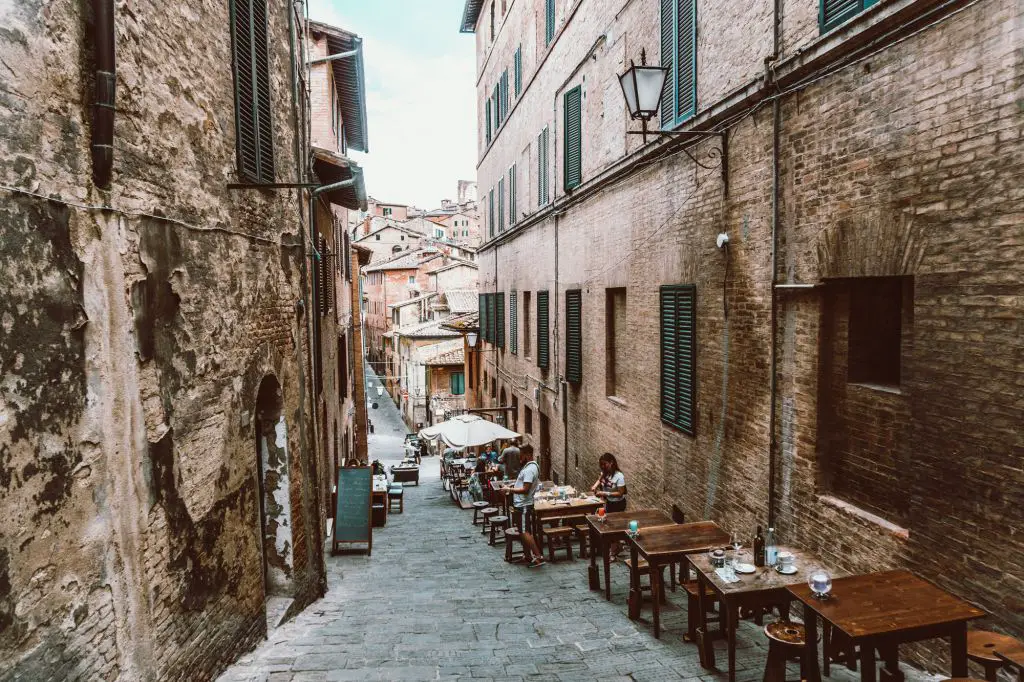
Montecchiello Viewpoint Point
If you have time and energy, make sure to go to the ultimate viewpoint in Tuscany that shows off its natural beauty. This is the “famous” Cyprus tree lined road that winds and curves around to a beautiful farmhouse estate.
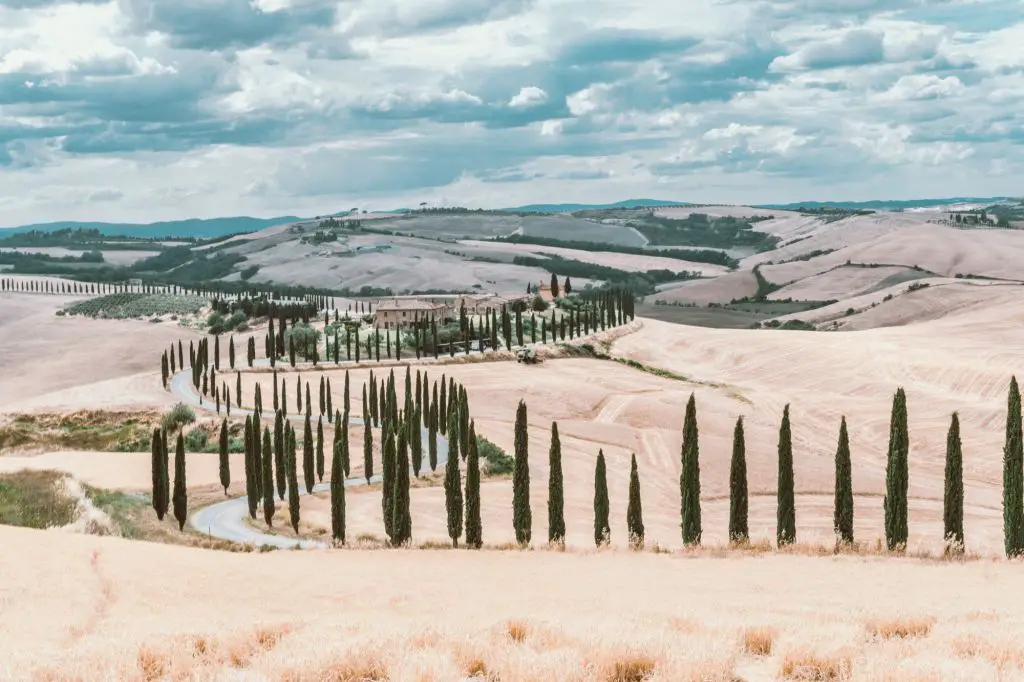
This is actually a hotel you can stay at but most people stop here to take beautiful photos of the landscape.
Day 4: Pitigliano
The following day started with a drive south to the beautiful hold town of Pitigliano. Located on top of a hill (which city in Tuscany isn’t at this point?) this town had old school charm that kind of reminded me of my visit to Matera in Puglia.
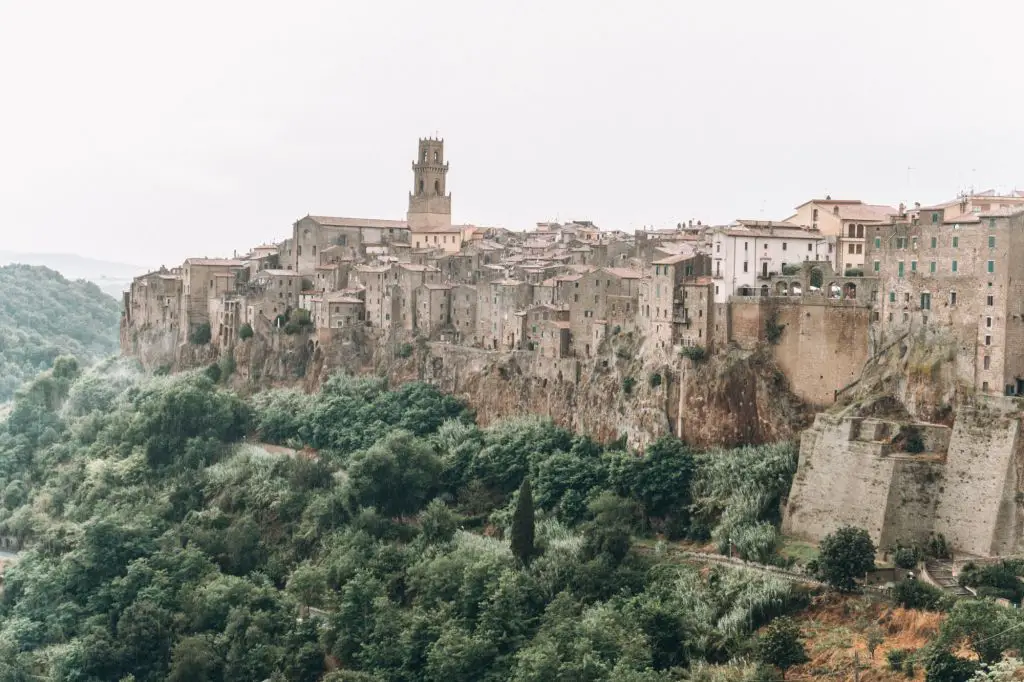
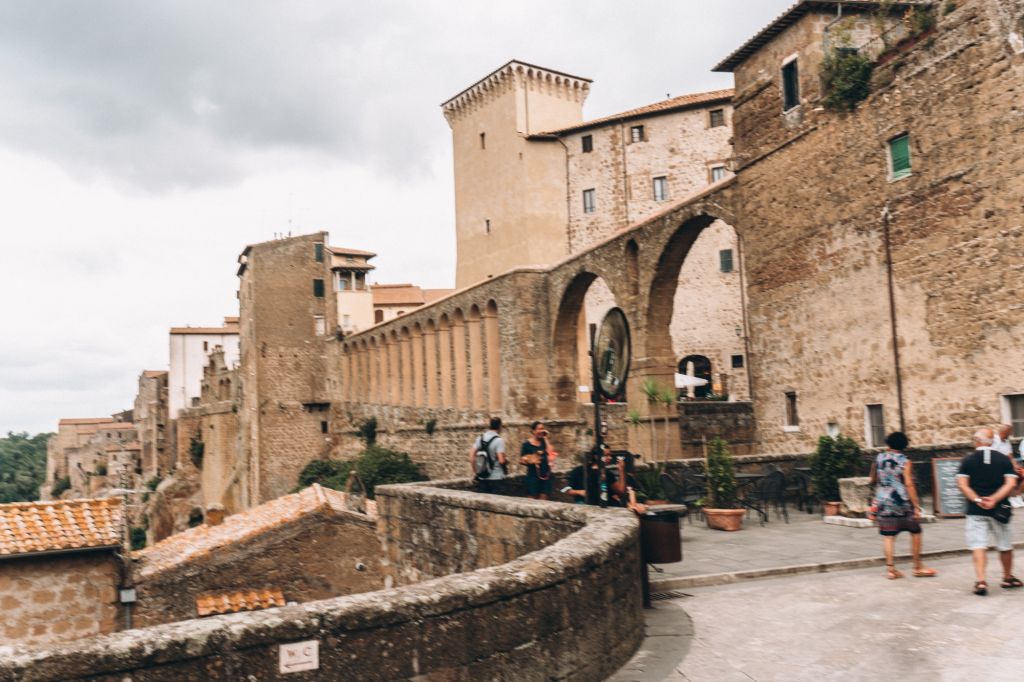
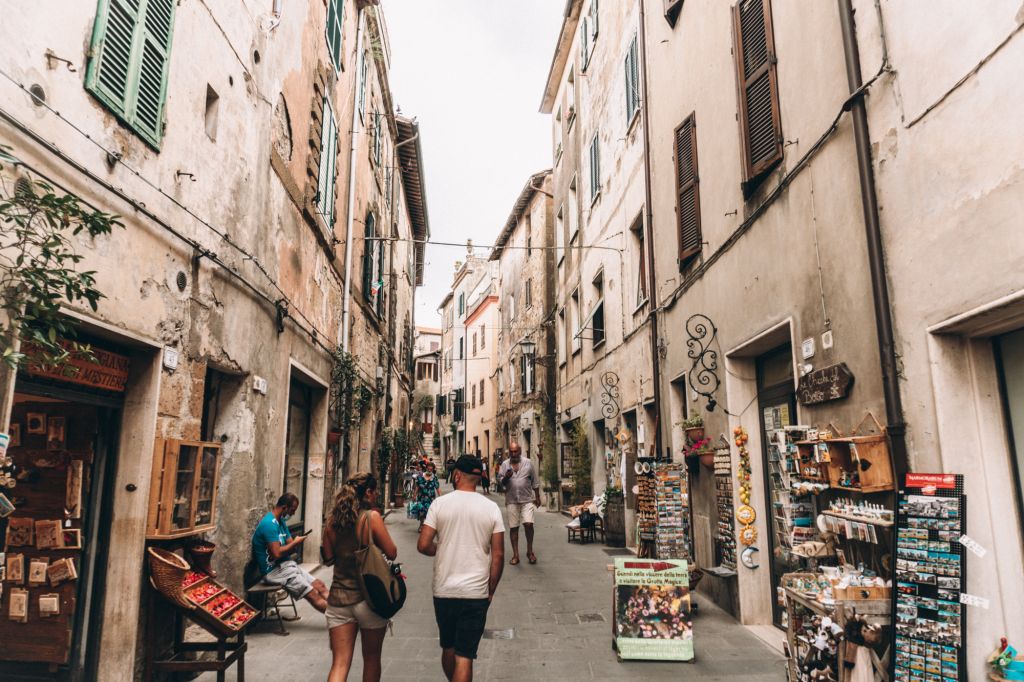
The town itself is not that big and there are only two main streets to walk through. However, the streets are very pretty as well as the views of the nearby valley.
I think looking back on it, I probably would not come to Pitigliano as a day trip from Montepulciano. It is quite far and not worth going all that way for. The weather was particularly bad on this day so I ended up calling the day early.
If I could go back, I would probably just spend another day driving around the Val D’Orcia and visiting the wine regions I wanted to see. I particularly liked the Brunello wines from Montalcino and I would have spent more time there.
My original plan was to actually go to Pitigliano and then to a winery in the Montalcino area like Banfi winery specializing in Brunello.
Terme Di Saturnia
If the weather was nicer, I would have surely visited the Terme Di Saturnia which are the famous and ultra picturesque thermal pools of Tuscany. However, with these places, I suspect the pictures are almost always better than reality. The pools look absolutely amazing given the right filters and the absence of crowds. Just look at this drone photo!

If this doesn’t make you want to visit, I don’t know what will. Sadly, this place gets super busy in the summer months. I think I would only come and visit this place during the off season months, and I would only come here right as the sun rose to avoid the crowds.
Day 5: Antinori Winery, San Gimignano
Day five starts with an early morning drive to the famous Antironi winery in Chianti. Antinori is by far the largest and probably the most famous winery in all of Tuscany. Its estate is home to a modern mothership like structure that looks more like a spaceship than a wine estate.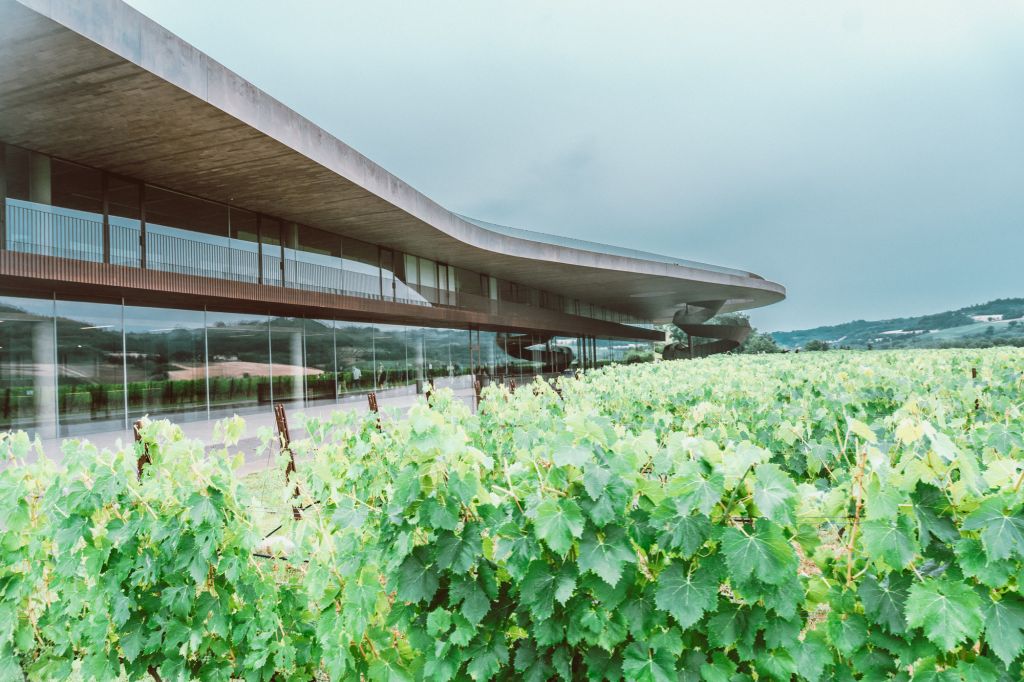
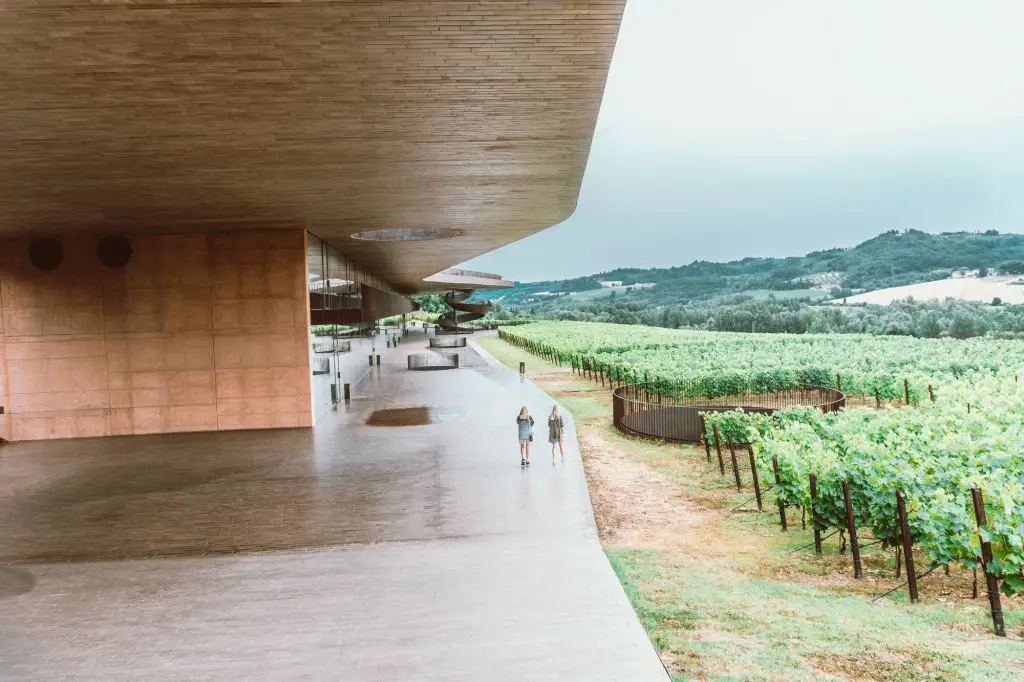
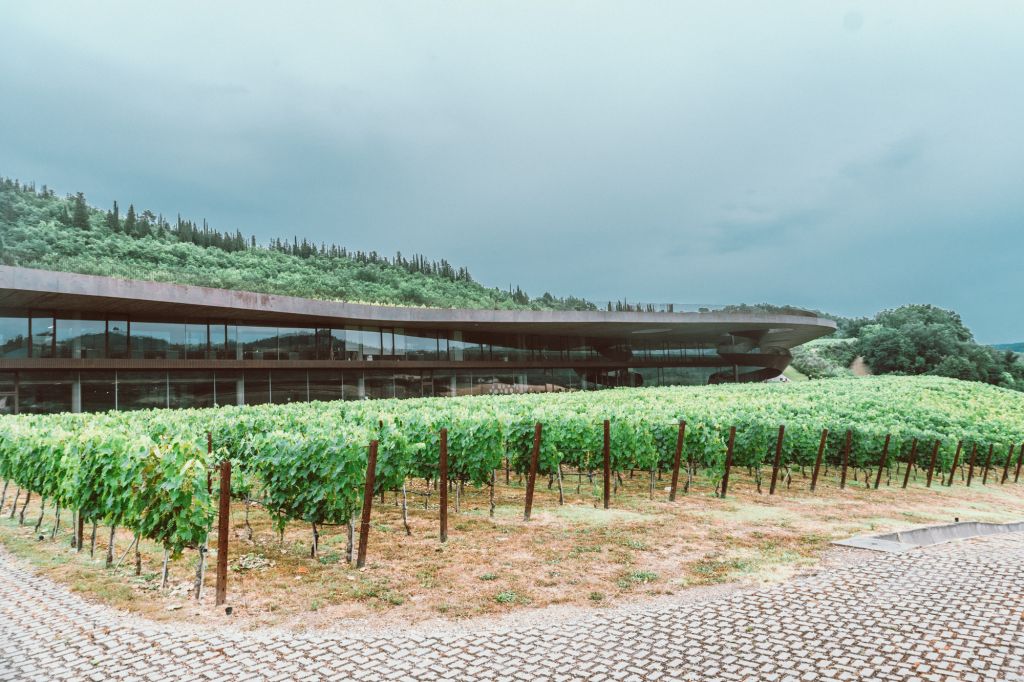
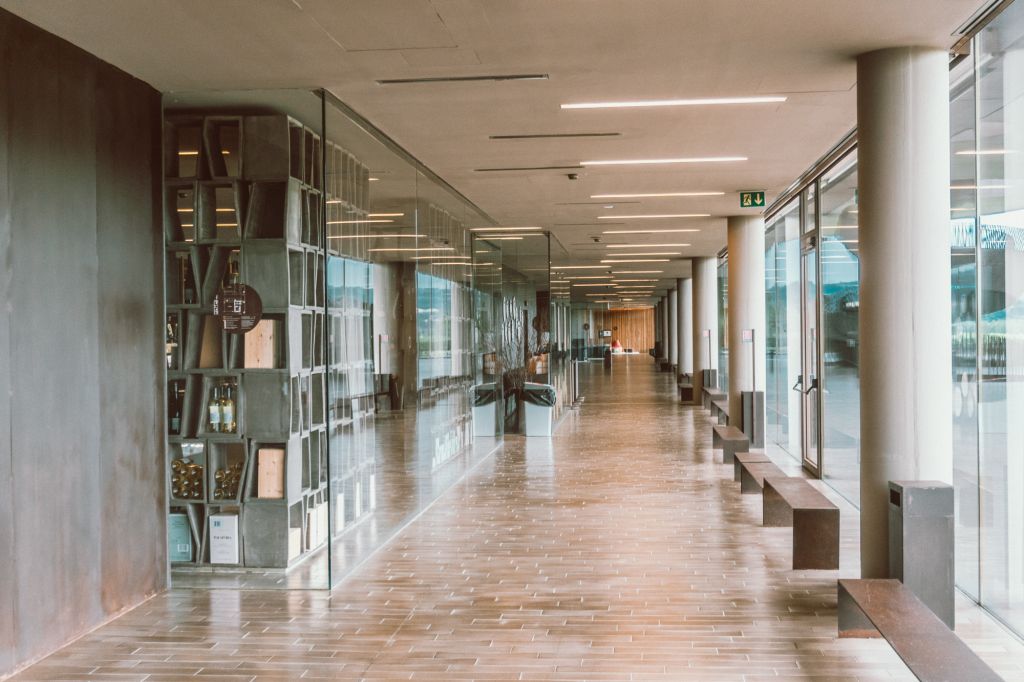
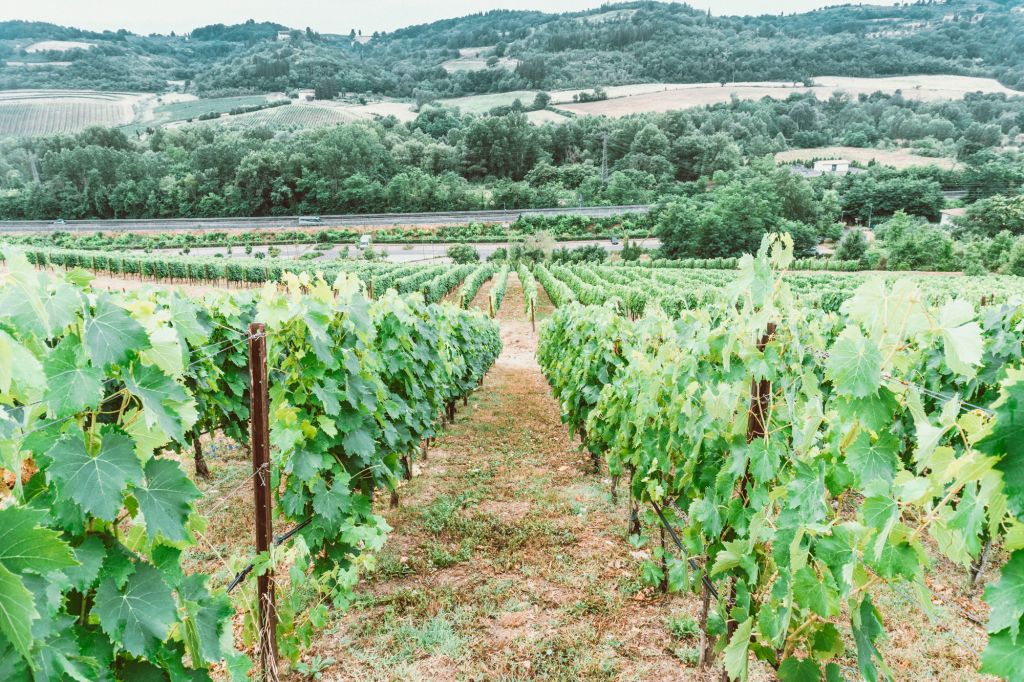
It’s a modern architectural wonder and also home to its wine shop where you can taste the many wines Antinori has to offer, as well as a Michelin style restaurant with beautiful views of its vineyard.
Antinori has multiple labels and multiple brands of wine in many locations around the world which was a big change from the smaller wineries I had visited previously. This place is famous for wine tasting tours with their cheapest tour option starting from €35 a person. However, if you do not want to book a scheduled tour, anyone can show up and walk around the estate and enjoy wine tastings at their leisure. This place is expensive however so keep that in mind.
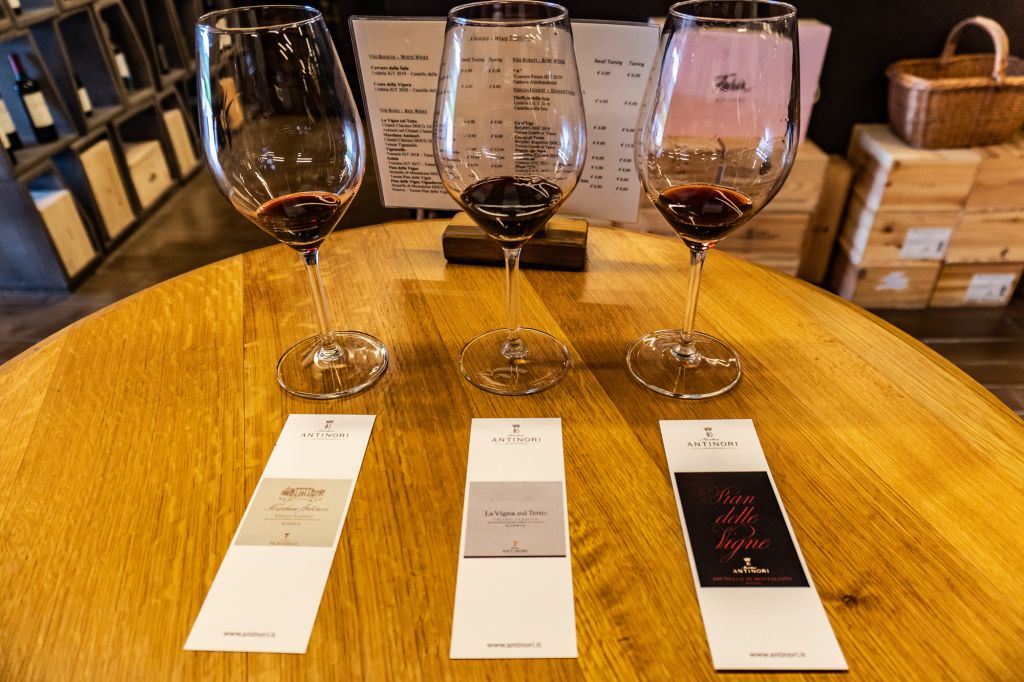
San Gimignano Town
San Gimignano is an old fortified medieval town whose walls date back to the year one thousand. It is famous for its historic and artistic heritage and its architecture, especially its towers. In 1990 it was declared a World Heritage Site by Unesco. Also very popular its local products including saffron and white wine, Vernaccia di San Gimignano.

This is probably one of the, if not the most picturesque town I saw in Tuscany. Highly recommended for a quick stop before going to Florence.
Day 5-8: Florence
Last but not least, the trip ends in Florence, the capital of Tuscany. Florence, as many might know from history classes, is one of the most important cities in Europe and the birthplace of the Renaissance. The Medici family, whose name I heard so much of in high school history, more or less ruled Florence for centuries and helped cast the Renaissance movement that took over the rest of Europe.
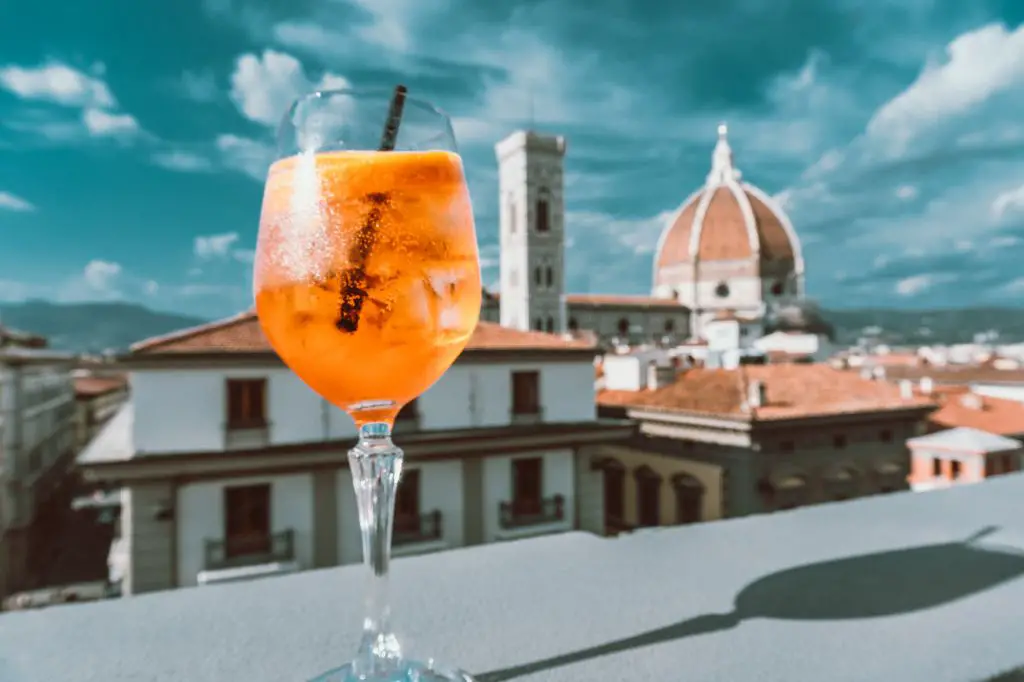
Florence was once the capital of Italy, before it was moved to Rome only a century ago. Florence is an absolutely beautiful city with picturesque streets, beautiful bridges, countless churches/museums, and one of the most stunning Duomos I’ve ever seen.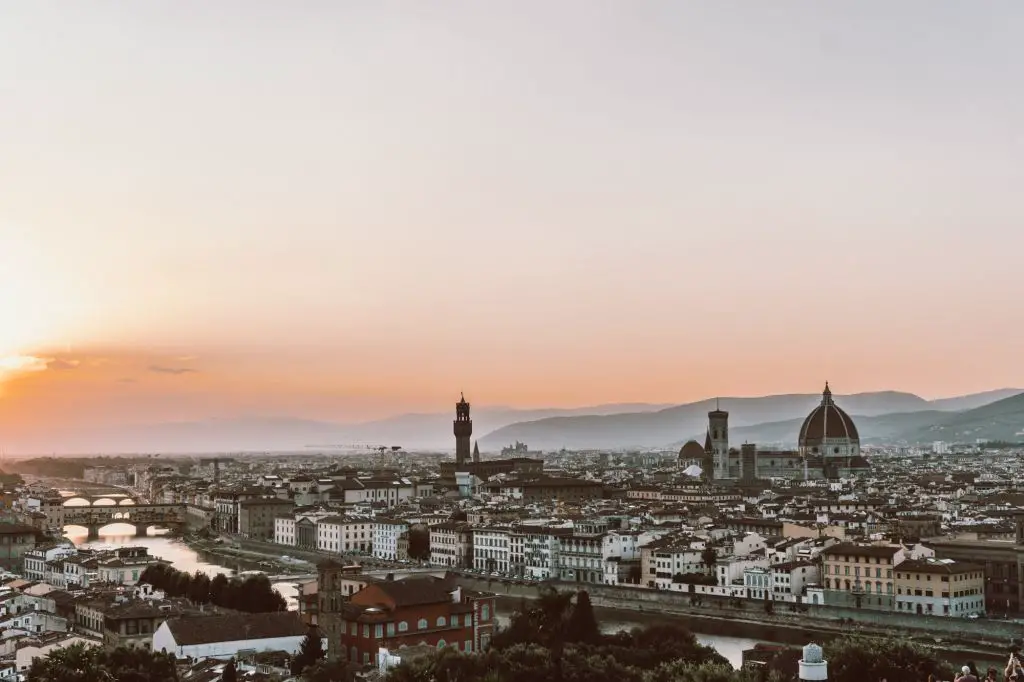
Eat Paninis in Florence
Florence is famous for their paninis, an in particular the Schiacciata bread. When in Florence, no trip is complete without gorging on many of these oversized sandwiches.
The most famous place of all is without a doubt All’Antico Vinaio. This place is an institution in Florence and attracts thousands of people every day to eat their sandwiches. The sandwiches are stuffed with meat, cheese, and veggies depending on your preference. All of it is then pressed and warmed between two pieces of Schiacciata bread, which I can compare to Focaccia bread.
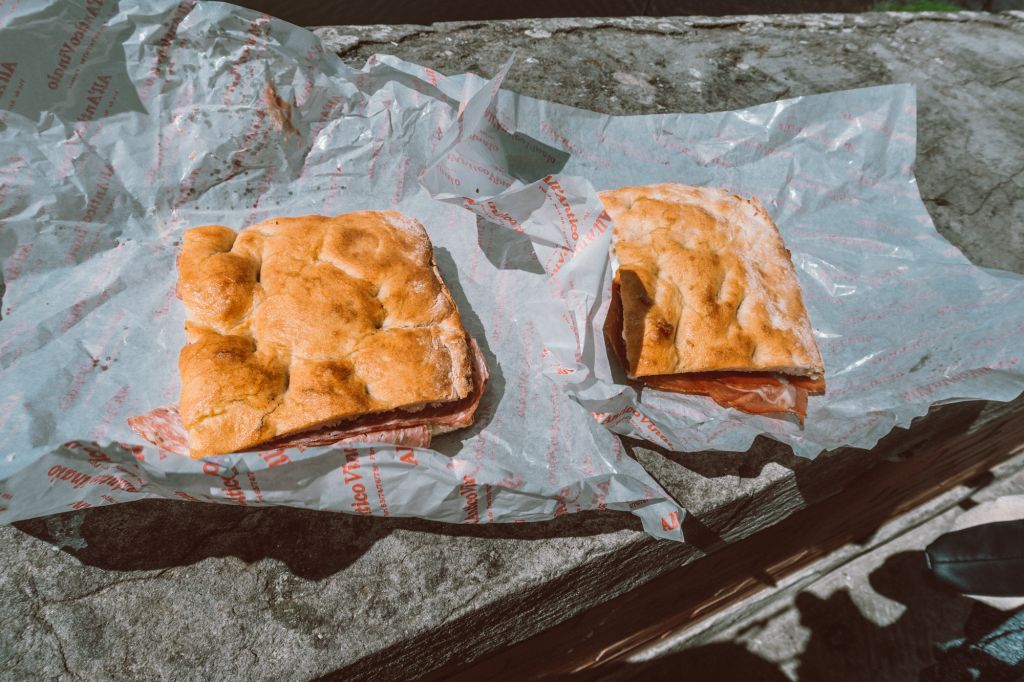
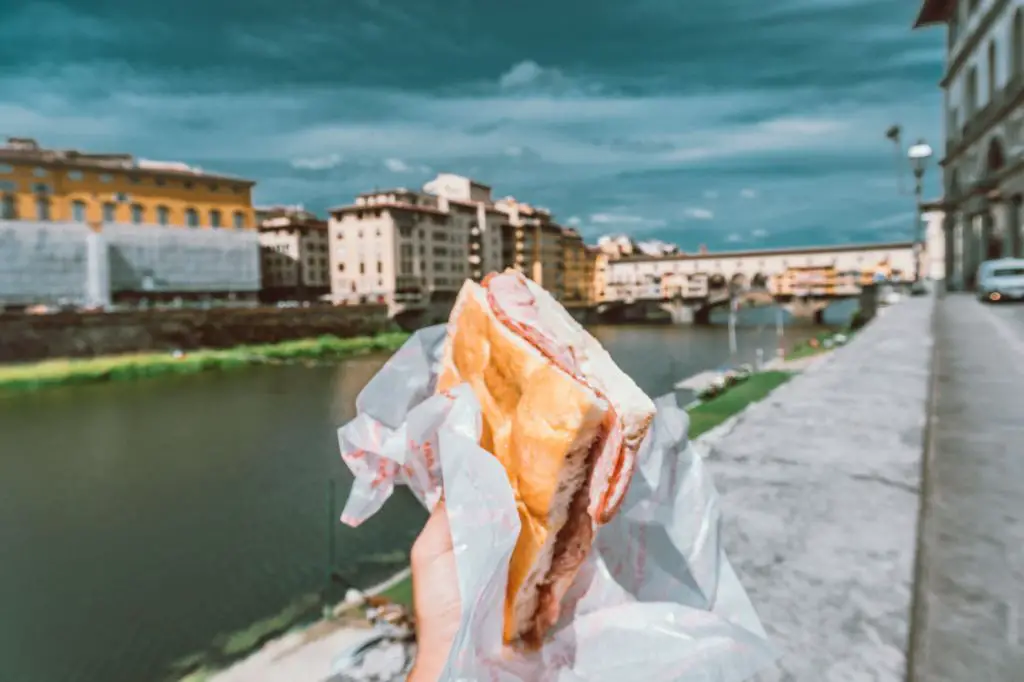
All’Antico Vinaio attracts lines that can wrap around the street. On my first visit, I came around 1pm which is rush hour. The line was wrapping around the corner so I decided to come back the following day around their opening time of 10am. There are multiple locations of All’Antico Vinaio literally on the same street (that’s how much demand there is) but all of them fill up with hungry tourists and locals alike.
After waiting about 15 minutes, I was able to finally purchase one of these delicious sandwiches. I went with the original Favalosa and the thing is massive. Bring it with you to the river nearby and enjoy your sandwich with a view. It’s likely there will be many others near you also doing the same thing.
Alternatively, if you don’t want to wait in line, I had paninis in other institutions nearby. I can recommend Panini Toscani and Il Bufalo Trippone. Both sandwiches are delicious and on the cheaper side (€5 or so).
Eat Florentine style steak
La Bistecca Florentina is an absolute must eat when visiting Florence. Turns out the city is also famous for its exceptional cows and steak. There are numerous restaurants in the city that serve the famous steaks which are essentially extra thick porterhouses.
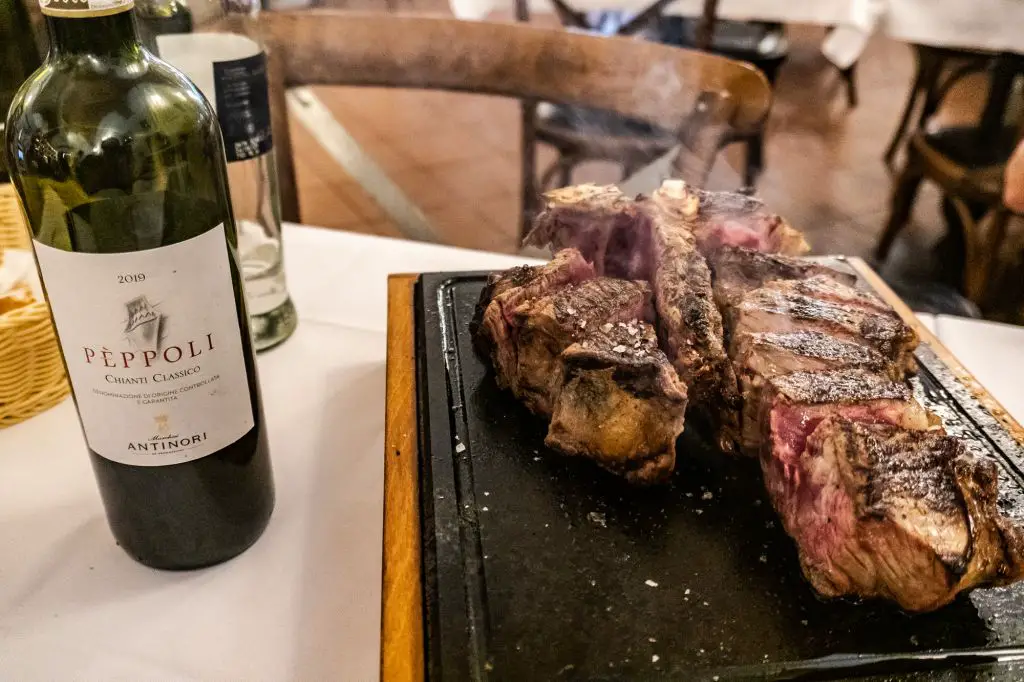
I went to Trattoria Dall Oste which is one of the most famous steakhouses in the city. Don’t mess around with anything and simply get their 1.2kg steak of Chianina cow which is the local and most respected breed. Ask them to cook it rare as this is how it is supposed to be prepared. It comes out on a hot stone plate so in case you are not manly enough, you can cook it further. I normally eat my steak Medium rare but rare was the absolute right move here.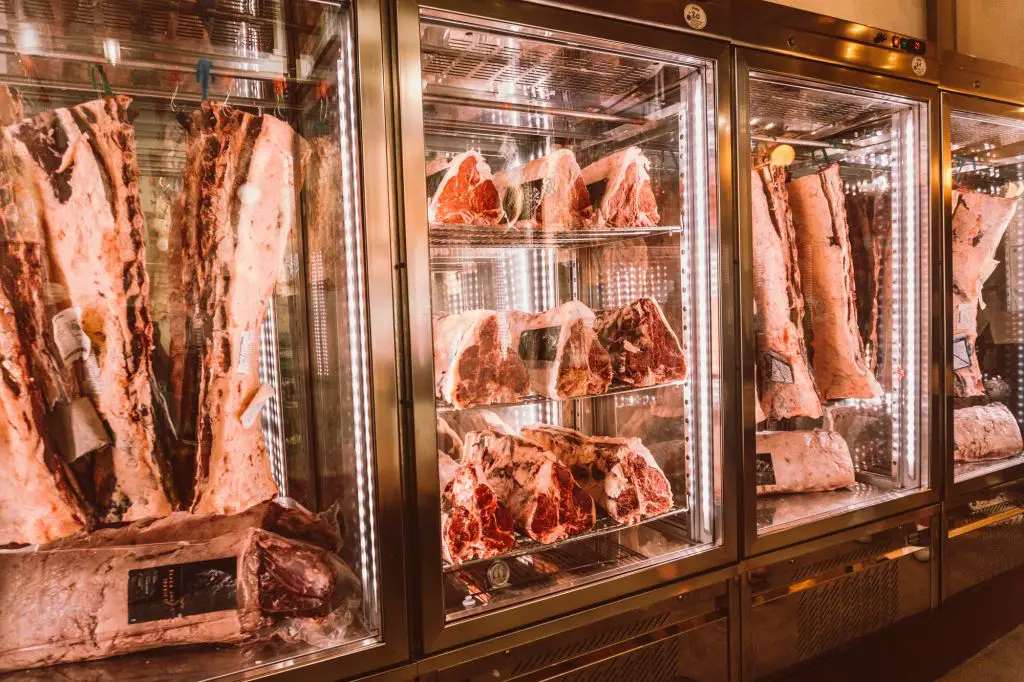
The steak is incredibly tender and juicy. More tender than most other steaks I’ve had with the exception of Japanese Wagyu of course.
What to do in Florence
This deserves a post in its own right and I might just make one eventually. There are so many things to do and see in Florence. Here are my main highlights of the city
- Go to the Duomo: You can’t miss this. You literally cannot. It is in the center of the city and its huge dome is visible throughout the city. The pictures are also very stunning of the narrow Florence streets with the Duomo at the end
- Piazza Michelangelo: For the best views of the city, go to the Piazza Michelangelo and enjoy the sunset with some drinks
- David of Michaelangelo: The ultra famous Statue of David sculpted by Michaelangelo is in this museum. Try to visit right before closing time to avoid the crowds
- Ponte Vecchio: Famous arched bridge with Roman origins. Definitely a must see.
Here are some more pictures to help inspire your Florence trip.
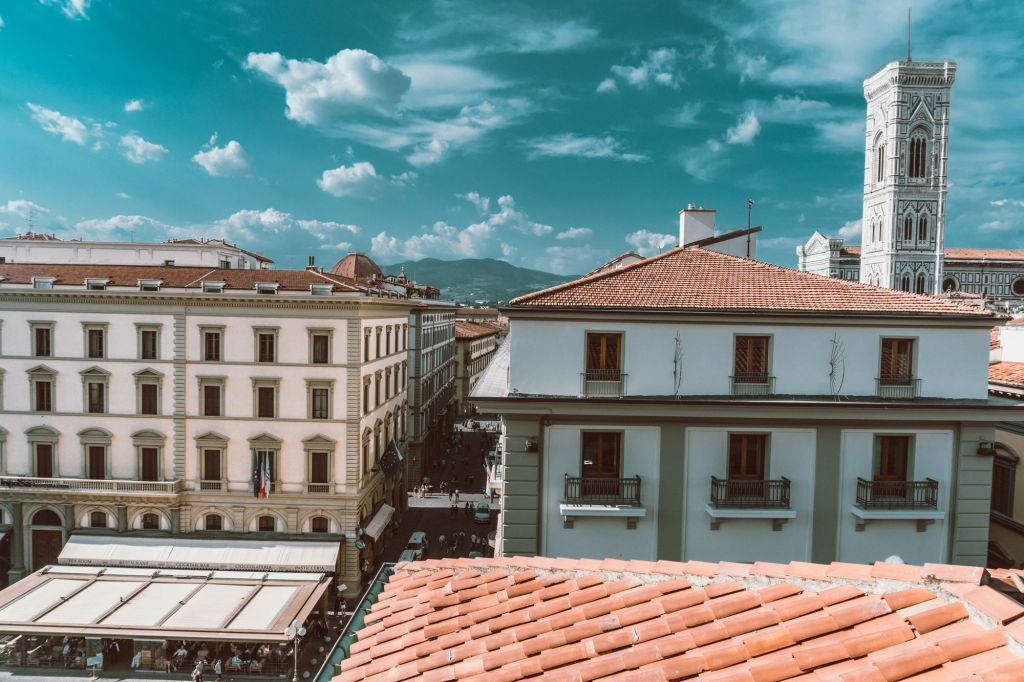
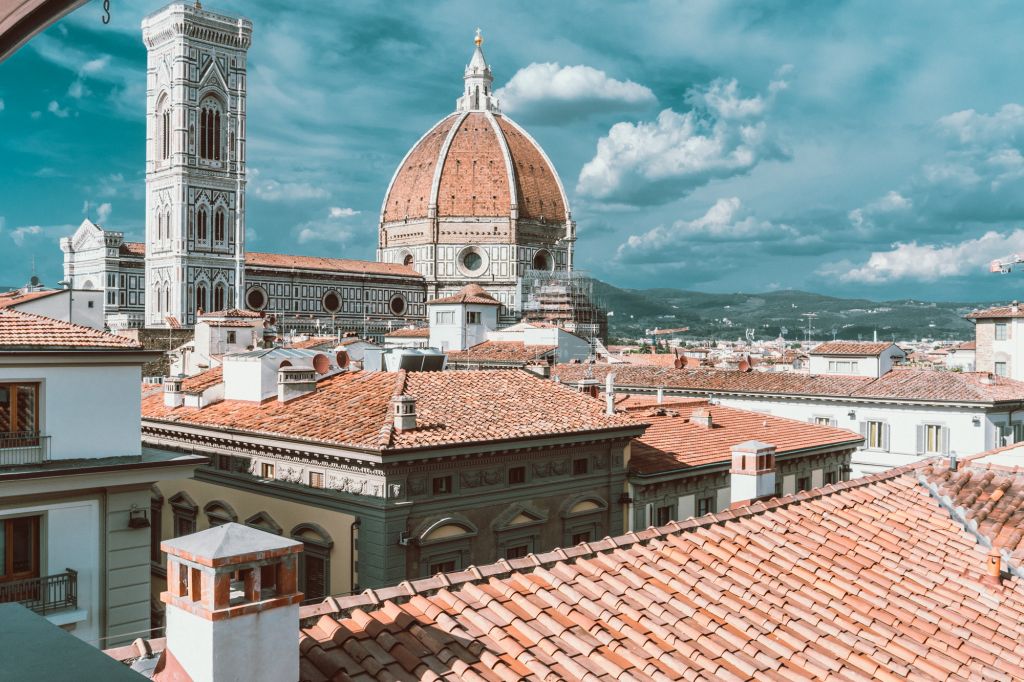
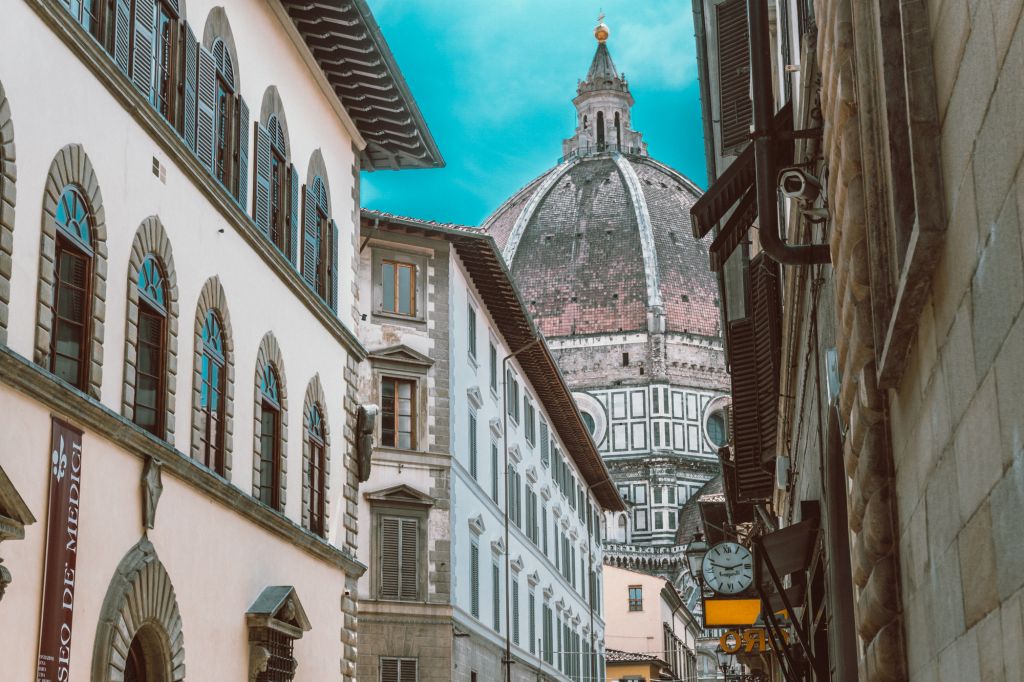
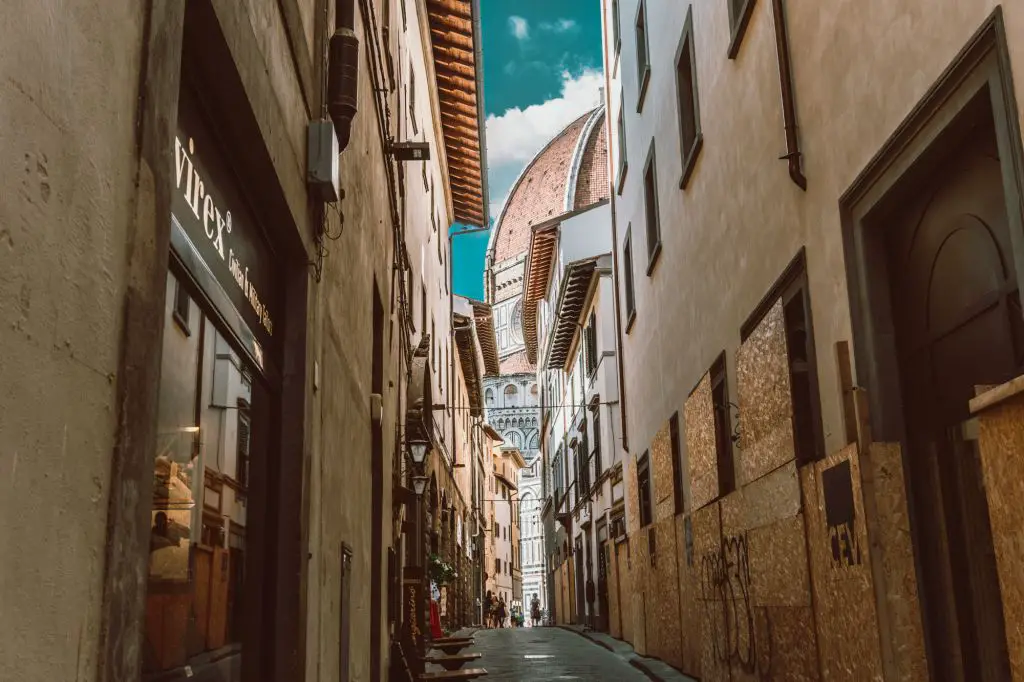
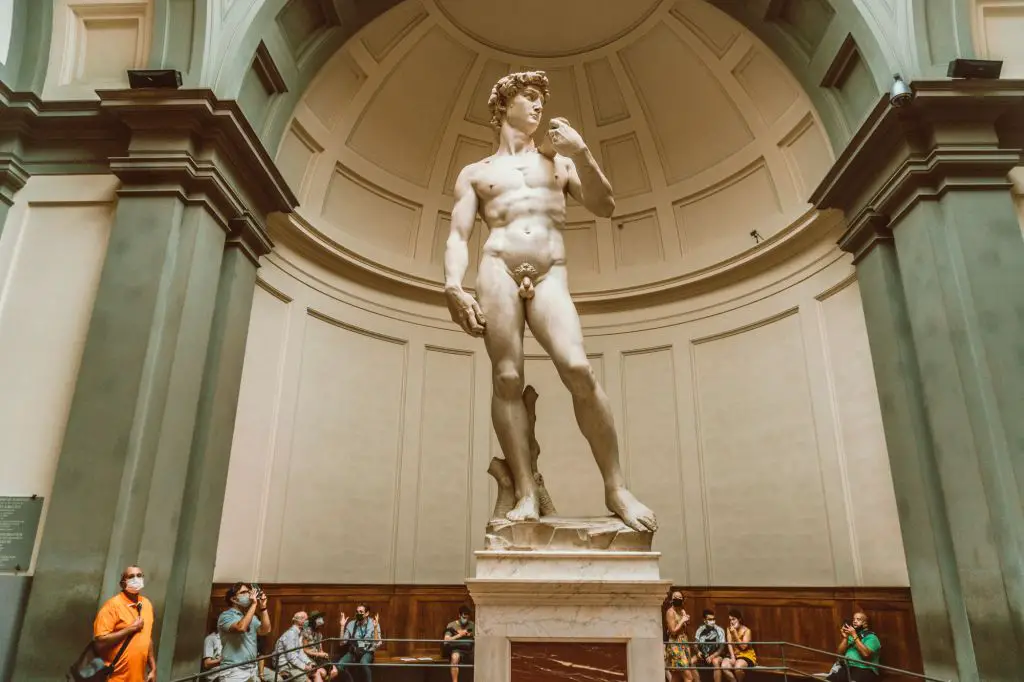
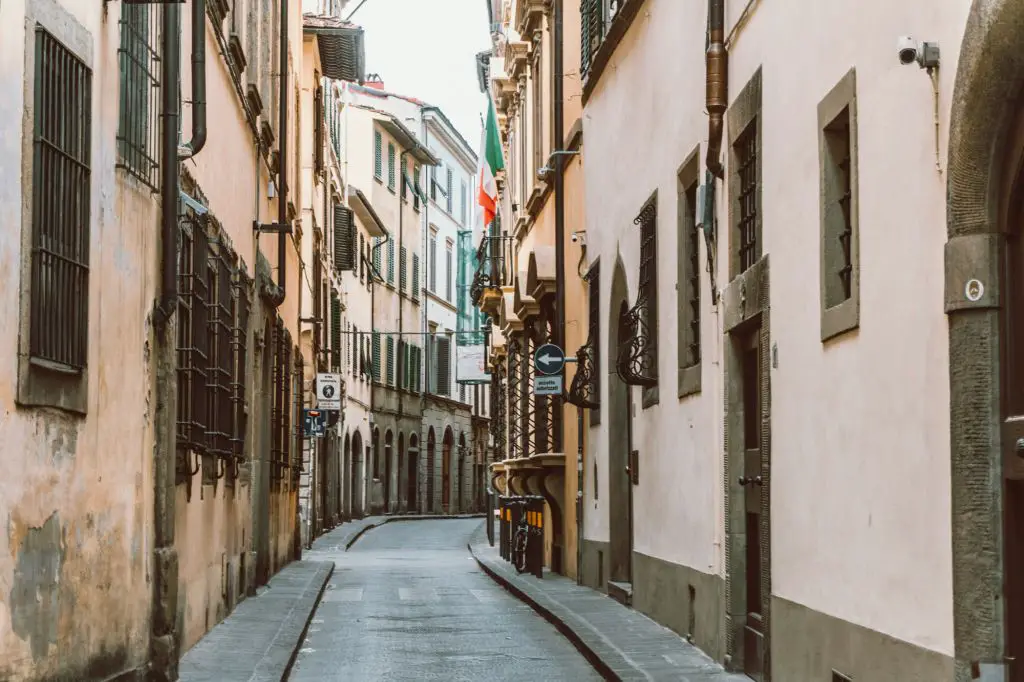
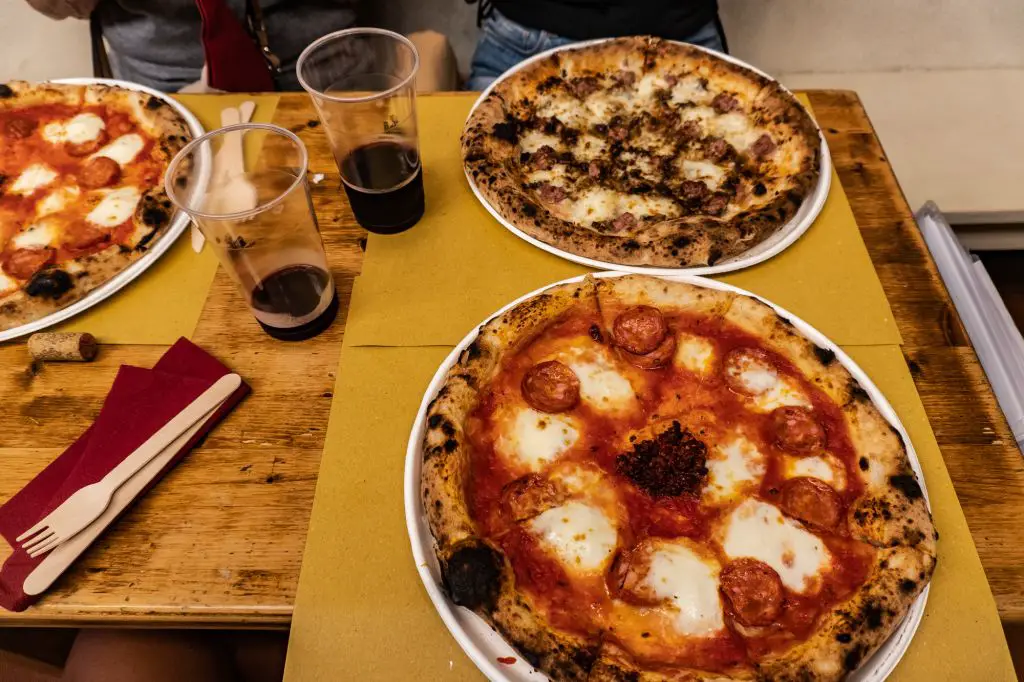
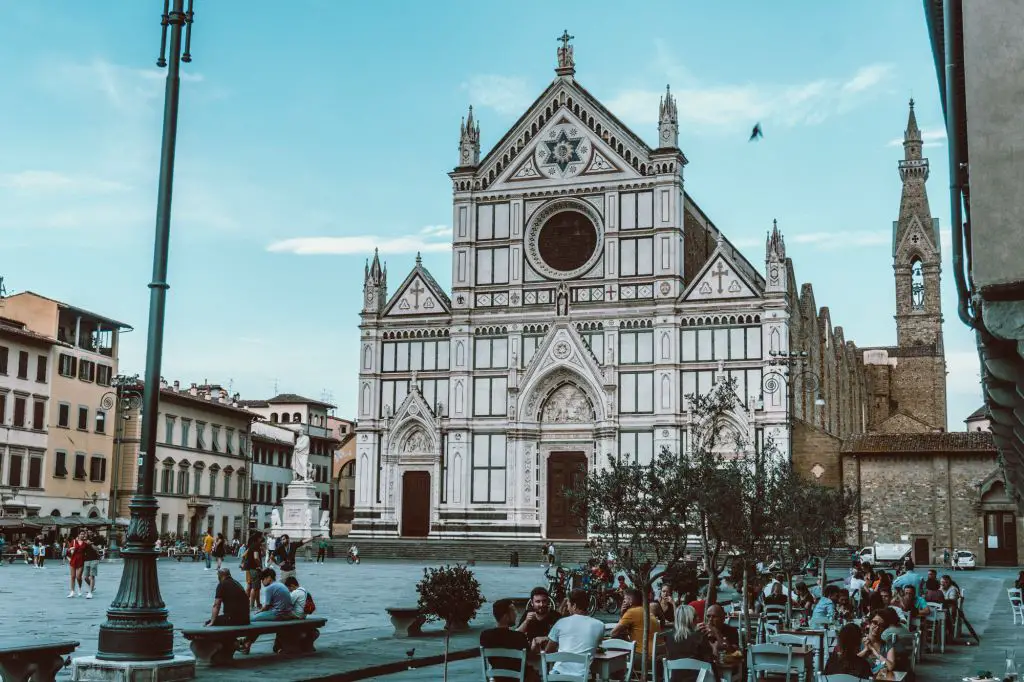
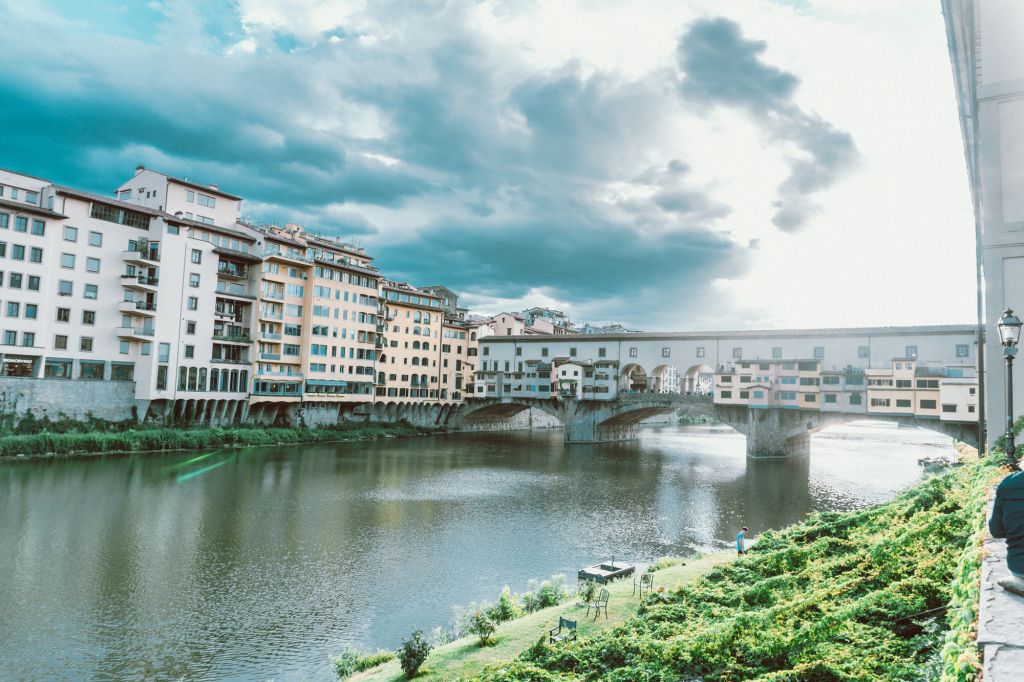
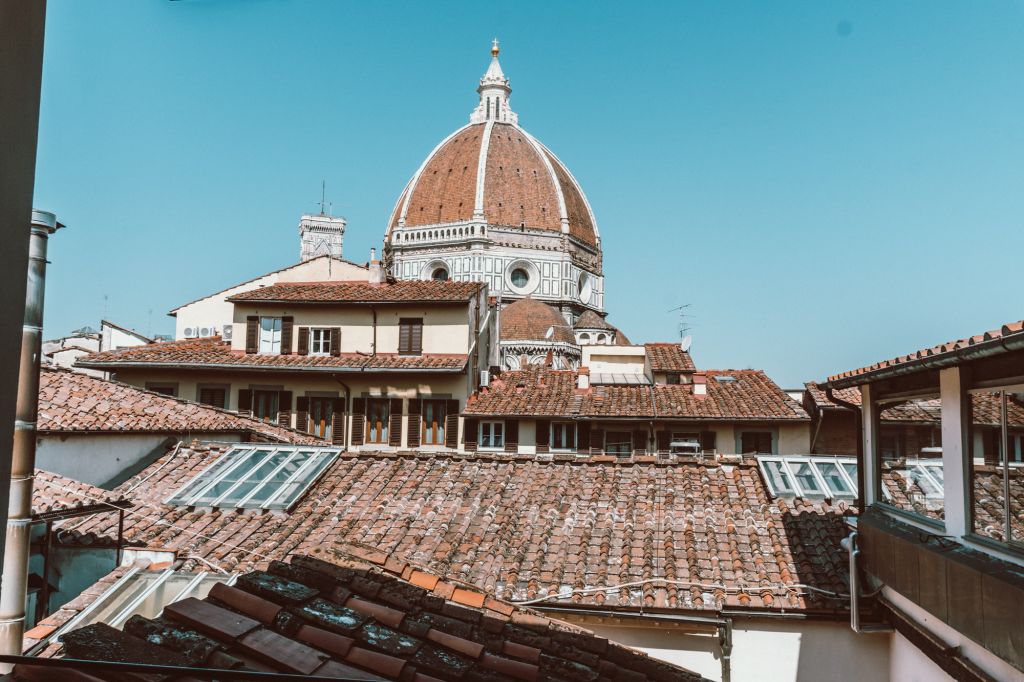
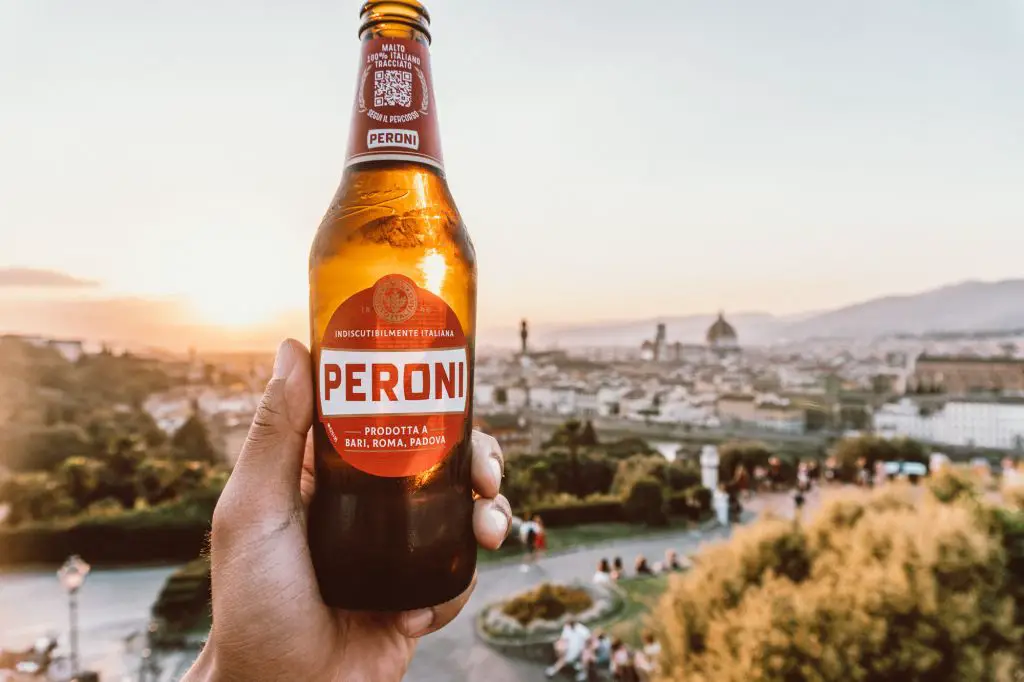
Day 8 or 9: Pisa
I actually had a flight booked out of Pisa Airport which is 1 hour west of Florence since that is the Ryanair hub. There were many cheap flights to Frankfurt and other European cities that it made sense for me to take this flight home. Along the way, it only makes sense to stop in one of the most visited and well known tourist attractions in the world, the leaning tower of Pisa!
If you are not flying out of Pisa, simply make a day trip from Florence. The trains leave from the Florence central station frequently and takes 1 hour to get to Pisa. From Pisa train station, it is a 20 minute walk to the famous leaning tower of Pisa.
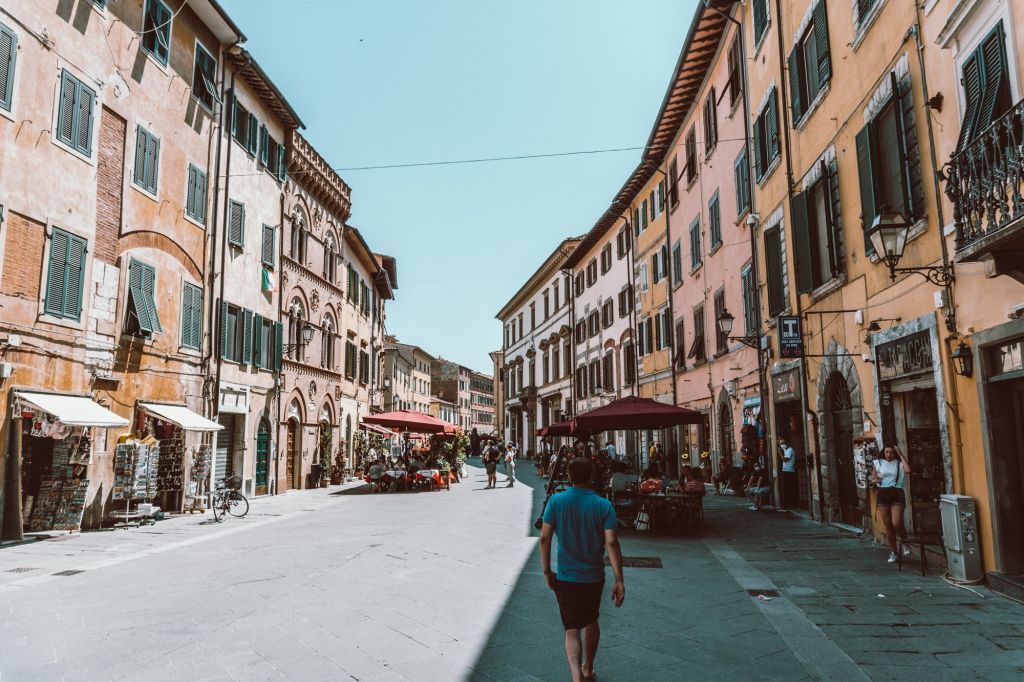
If you are flying out of Pisa airport and want to visit on your way out but worried about your luggage, there is a luggage storage option just outside of the main station called Stowaway Lockers.
There’s not much to say about the Leaning Tower of Pisa that you don’t already know. It was originally designed to be a bell tower in the 12th century. The plan was to never build an actual leaning tower, but it only progressed in this manner while it was being built. Floor after floor would go up and people noticed the lean to horror and dismay. Eventually, they just left it leaning and it still stands today as the penultimate symbol of Pisa.
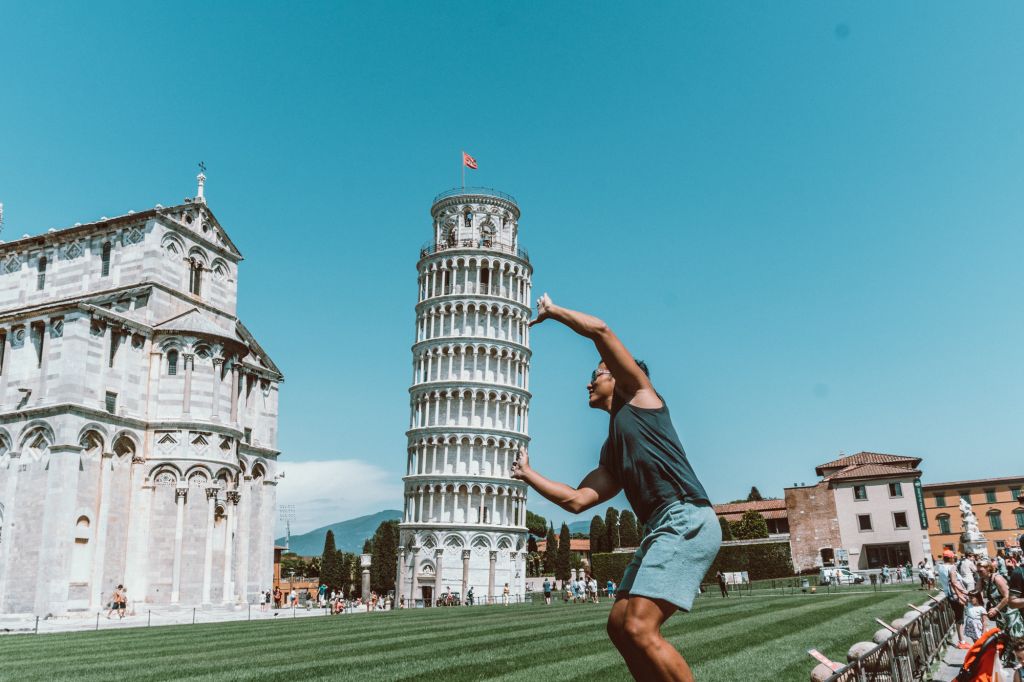
Make sure to take your standard perspective photos here of you pretending to hold it upright, kissing it, etc.
Of course, there will be hundreds of other people doing it too which always makes for a good photo in and of itself.
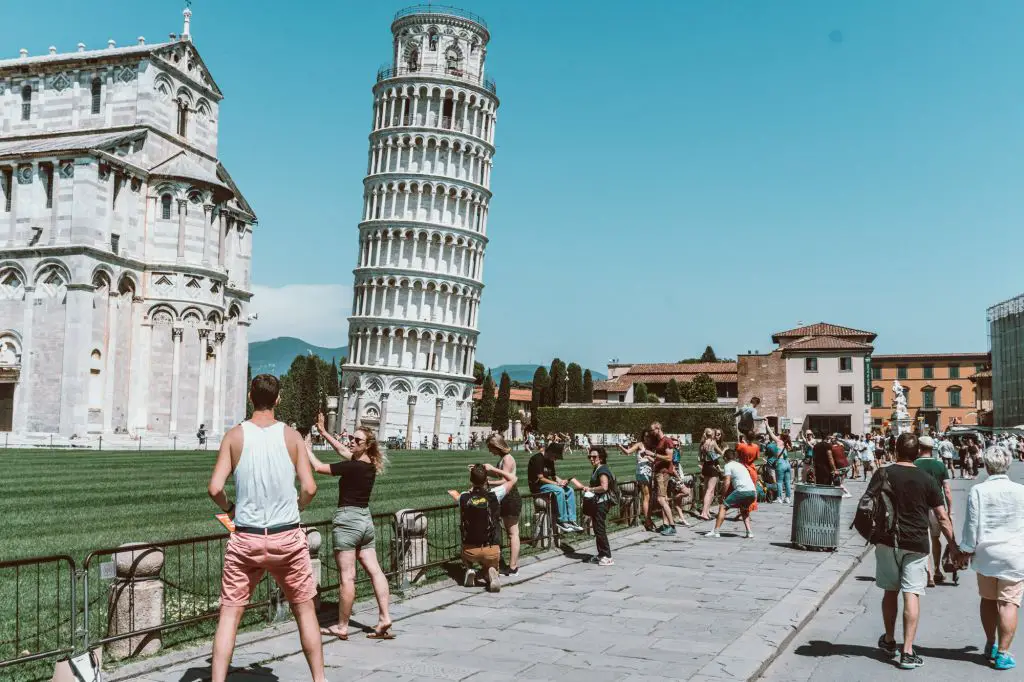
Tuscany Itinerary Day by Day
This is my Tuscany itinerary on a day by day basis to summarize everything that I wrote. I will also give you some ideas for other itineraries depending on your allotted times!
Remember that I stayed in Montepulciano for the duration of my stay in the wine region. If I had more time, I would have split my stay between Montepulciano and a town in the Chianti region so I could explore the areas easier without driving so much. I will give numerous options below to inspire!
Rome to Florence – One week
Day 1: Arrive in Rome, drive to Orvieto for lunch and then arrive in Montepulciano
Day 2: Wine tasting in Montepulciano area, lunch in Pecorino Farm, afternoon in Montalcino and wineries around the area
Day 3: Drive to Chianti and visit wineries in the region, lunch in Siena
Day 4: Full day of wine tasting in Tuscany
Day 5: Montepulciano to Florence, stop at San Gimignano and Antinori Winery along the way
Day 6: Full day Florence
Day 7: Full day Florence
Day 8: Pisa day trip, fly out of Florence/Pisa
Florence to Florence – One week
Day 1: Arrive in Florence, explore city
Day 2: Full day in Florence
Day 3: Day trip to Pisa and Lucca
Day 4: Drive to Antinori Winery and San Gimignano, overnight in Montepulciano
Day 5: Explore Montepulciano and wineries surrounding
Day 6: Explore Montalcino and the Brunello making wineries of the region
Day 7: Free day to explore the Tuscan wine region
Day 8: Drive back to Florence to fly home
Florence to Florence – Ten days
Day 1: Arrive in Florence, explore city
Day 2: Full day in Florence
Day 3: Day trip to Pisa and Lucca
Day 4: Drive to Antinori Winery and San Gimignano, overnight in Siena
Day 5: Explore Chianti Region wineries
Day 6: Drive to Montepulciano while wine tasting along the way, overnight in Montepulciano
Day 7: Explore more of Montepulciano
Day 8: Explore Montalcino and wine region around
Day 9: Day trip to Pitigliano and the villages nearby
Day 10: Drive back to Florence
Florence to Florence – Two Weeks
With two weeks, I think you can really do the region justice. I would also include Cinque Terre as this is an incredibly beautiful and well known spot that is nearby to Florence.
Day 1: Arrive in Florence, explore city
Day 2: Full day in Florence
Day 3: Full day in Florence
Day 4: Drive to Pisa and Lucca, overnight in Cinque Terre
Day 5: Full day Cinque Terre
Day 6: Full day Cinque Terre
Day 7: Drive back towards Tuscany and overnight in the Chianti area (San Gimignano, Siena, etc.)
Day 8: Wine tasting in Chianti region
Day 9: Drive to Montepulciano, wine tasting along the way
Day 10: Full day wine tasting in Montepulciano
Day 11: Full day wine tasting in Montalcino area
Day 12: Full day wine tasting in your preferred area
Day 13: Day trip to Pitigliano and Terme Saturna baths
Day 14: Drive back to Florence to fly home
Tuscany and Amalfi Coast Itinerary
Tuscany and the Amalfi Coast of Italy are perhaps some of the most desirable locations to visit in Italy. I am a huge fan of the Amalfi Coast and absolutely love the city of Naples.
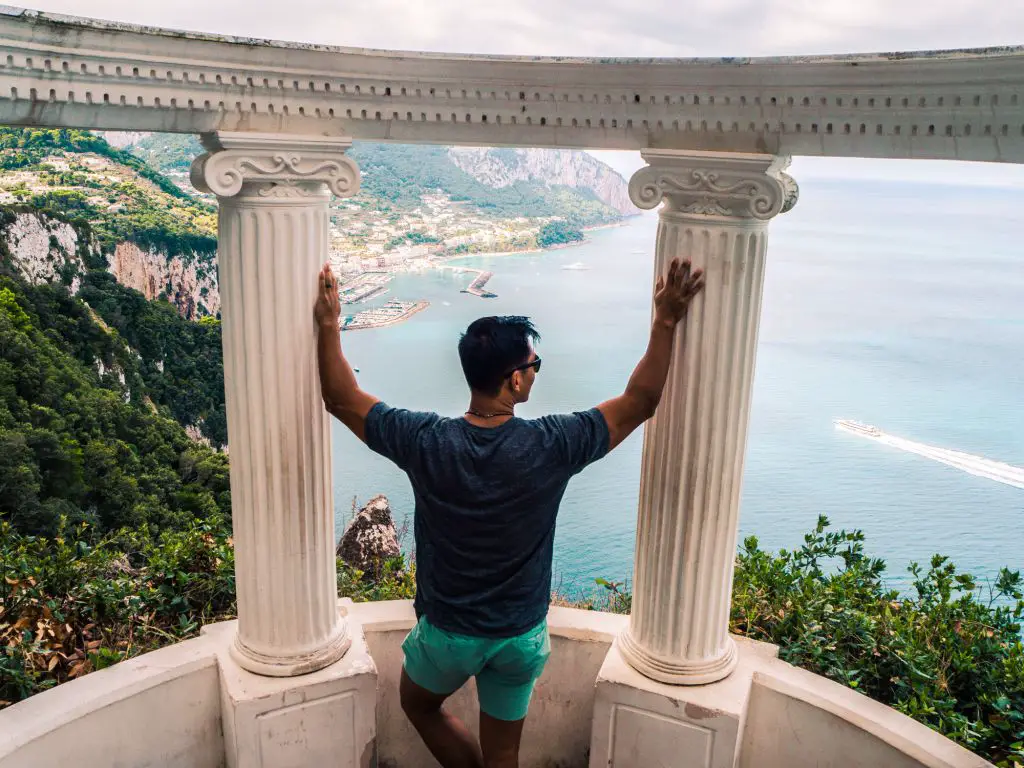
Once you’re done with wine tasting Brunellos in Tuscany, then traveling to the birthplace of pizza in Naples is the logical next step right? Round it off with a visit to the wonderful island of Capri and the incredible views on the Amalfi coast and you have the ultimate Italian itinerary.
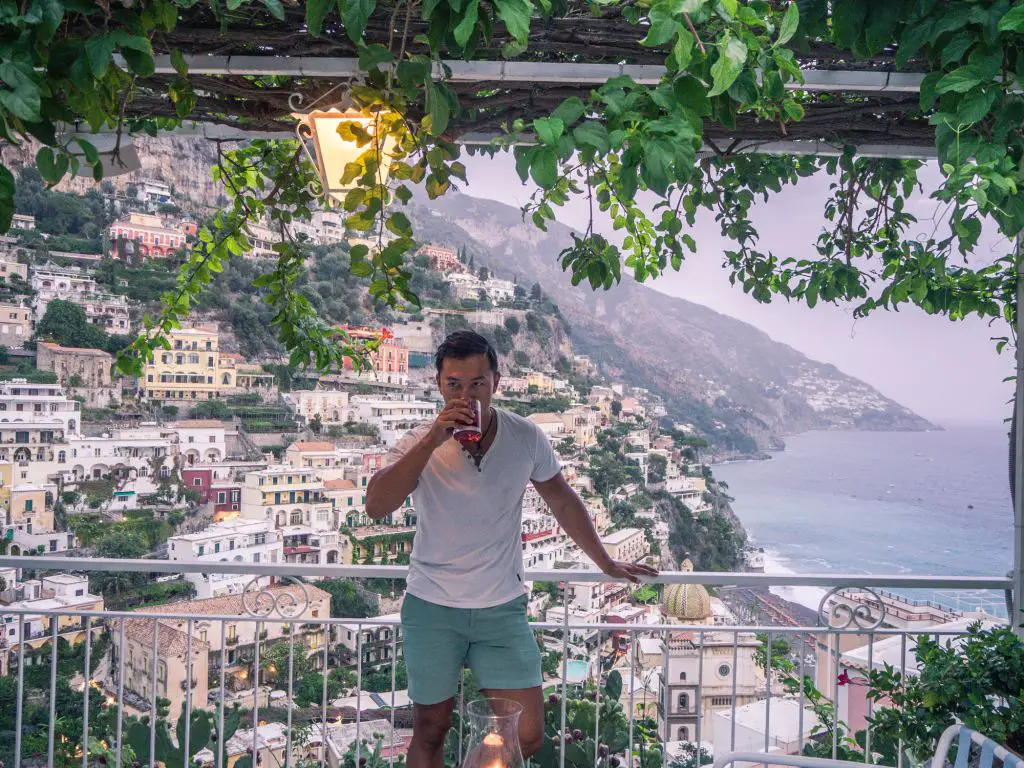
I spent a week traveling around Tuscany and about ten days in Naples and the Amalfi Coast. If you have two to three weeks for your trip you can easily do this trip by combining the itinerary in this post, and the itinerary from my Amalfi Coast itinerary.
Something like this:
Day 1: Arrive in Florence, explore city
Day 2: Full day in Florence
Day 3: Day trip to Pisa and Lucca
Day 4: Drive to Antinori Winery and San Gimignano, overnight in Montepulciano
Day 5: Explore Montepulciano and wineries surrounding
Day 6: Explore Montalcino and the Brunello making wineries of the region
Day 7: Free day to explore the Tuscan wine region
Day 8: Drive to Florence and fly to Naples
Day 9: Full day Naples
Day 10: Full day Naples
Day 11: Naples to Capri Island
Day 12: Full day Capri (Anacapri and Capri)
Day 13:Full day Capri (Anacapri and Capri)
Day 14: Capri island to Positano
Day 15: Positano & Praiano Area
Day 16: Positano & Praiano Area
Day 17: Ravello
Day 18: Ravello
Day 19: Ravello Salerno to Naples
Of course you can shorten or lengthen this itinerary depending on your time frame but it is totally doable!



